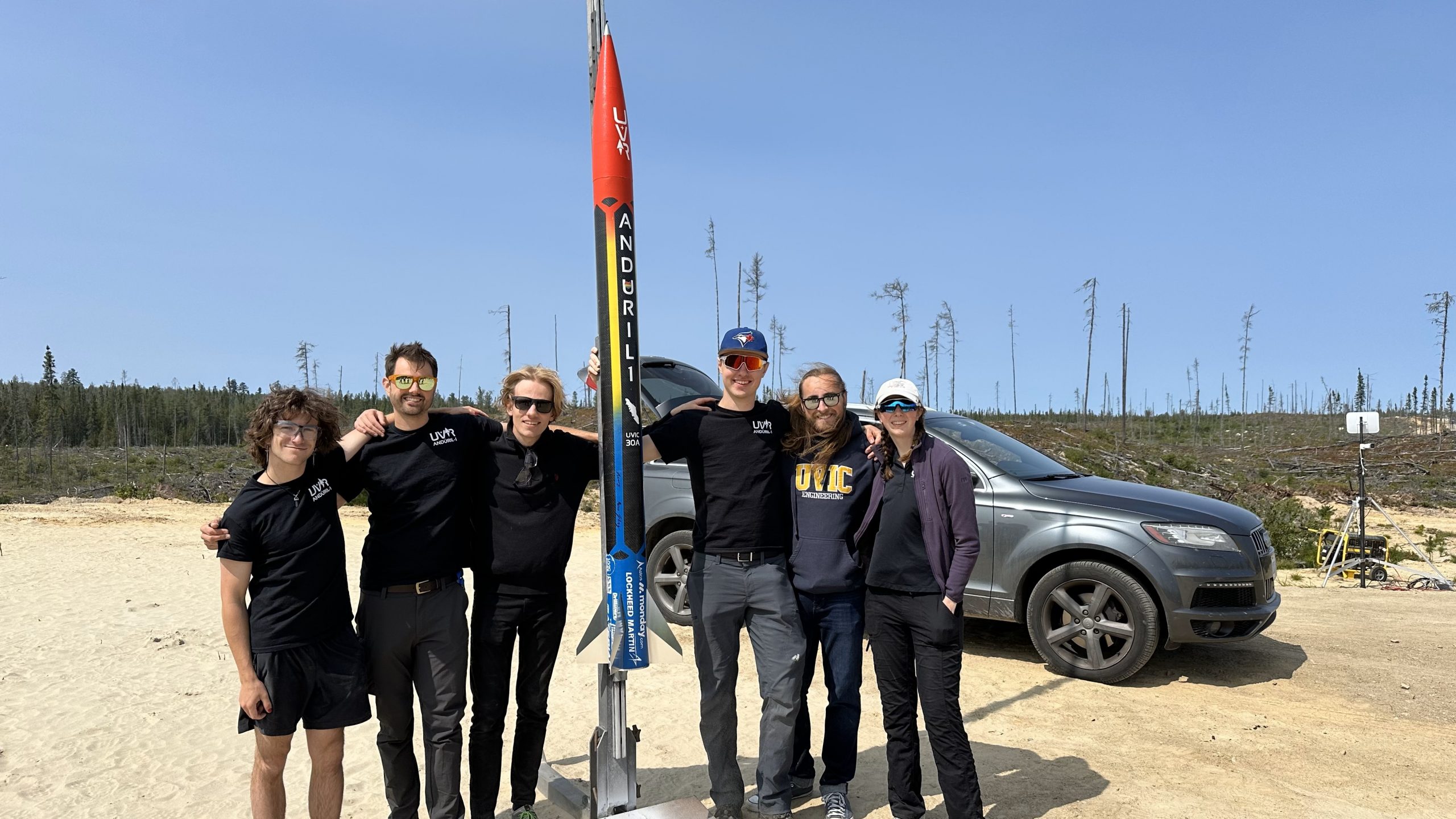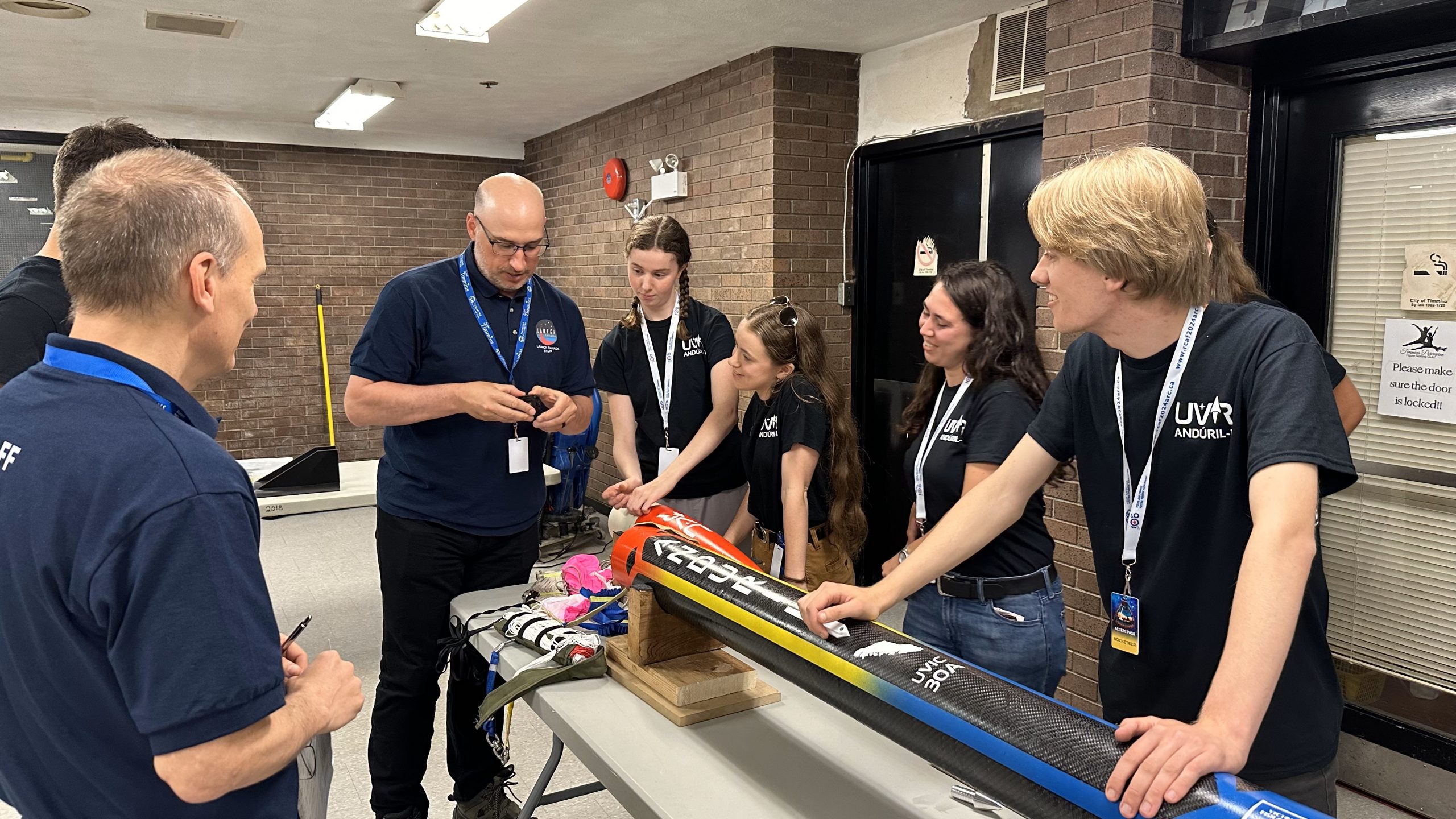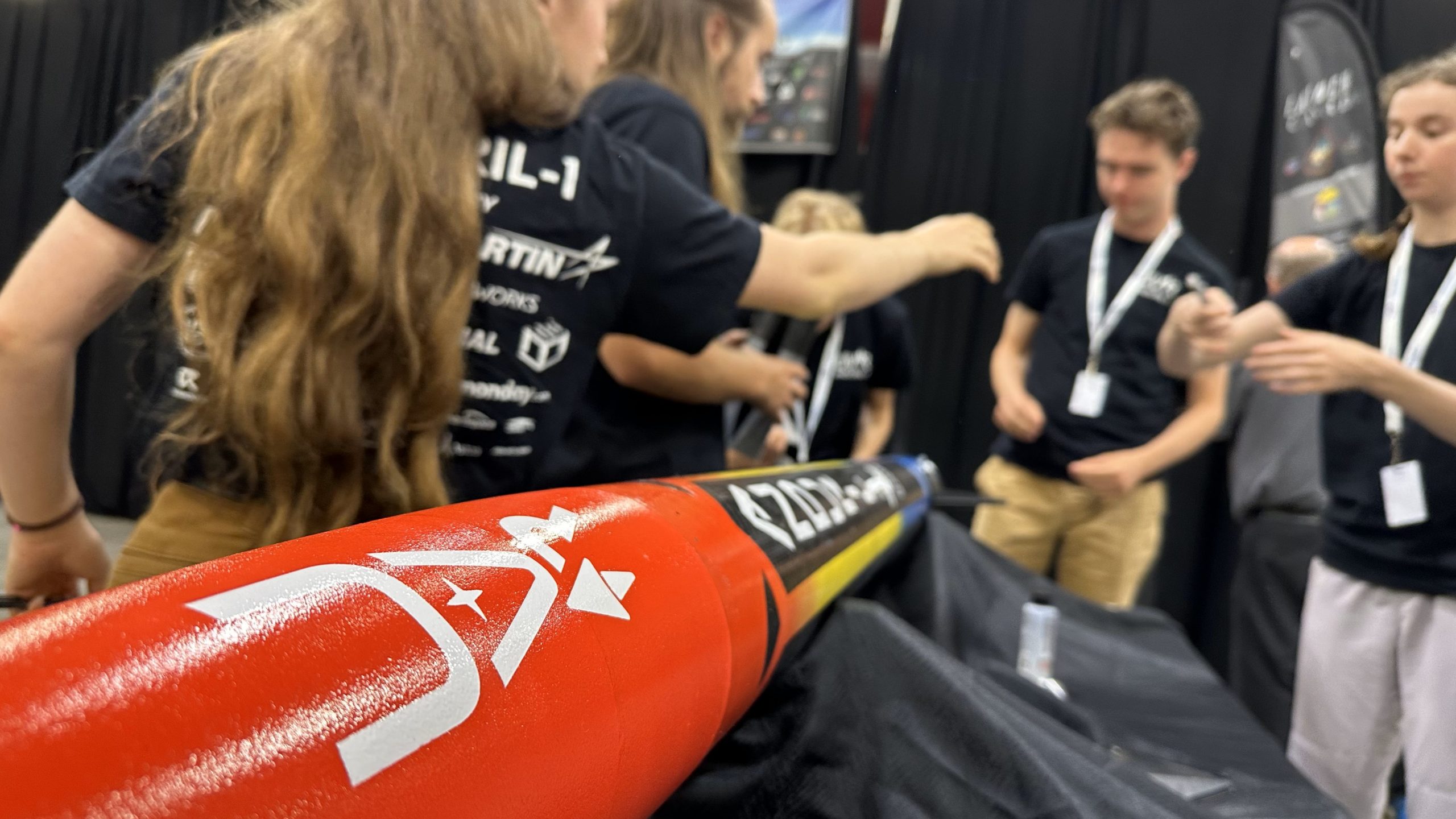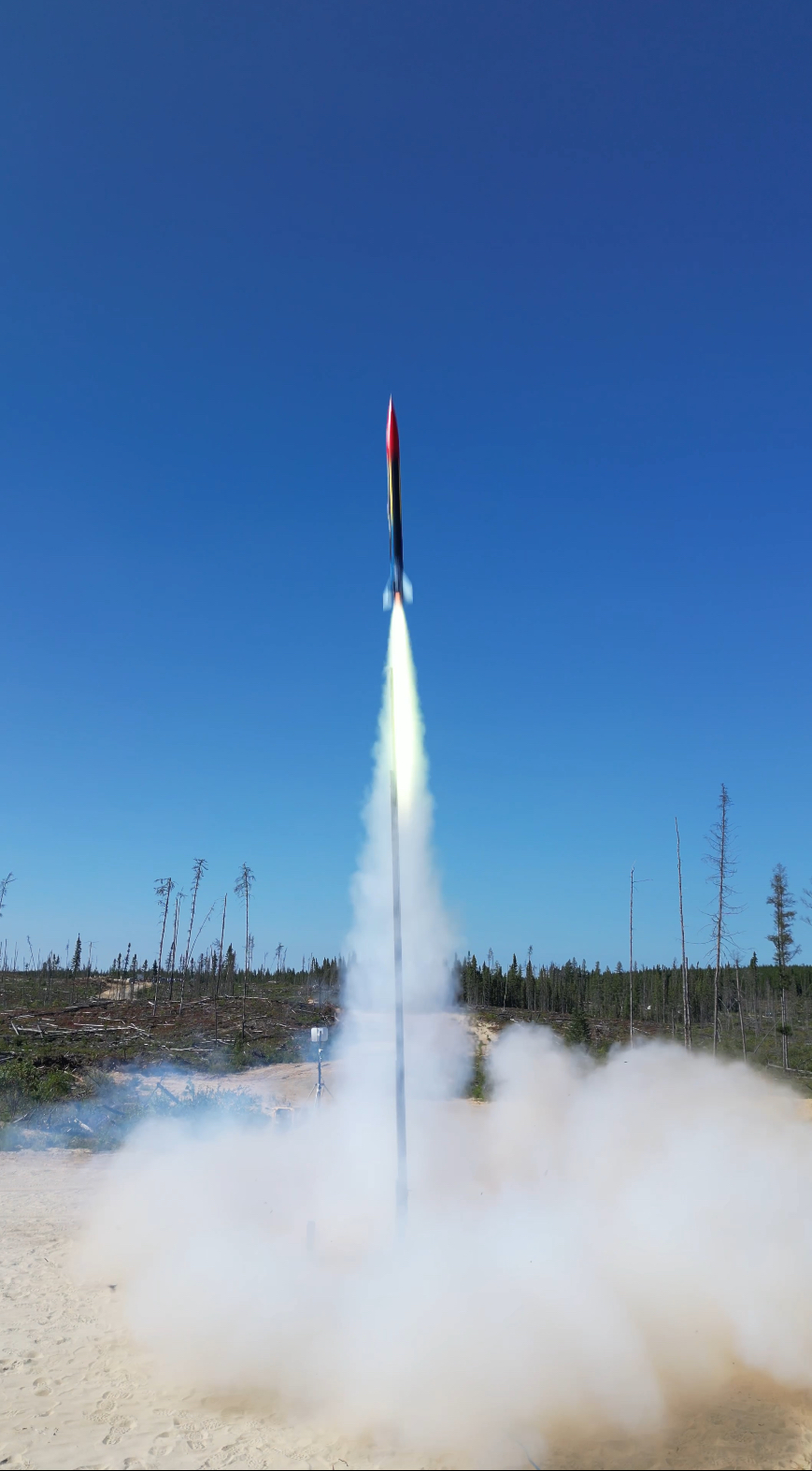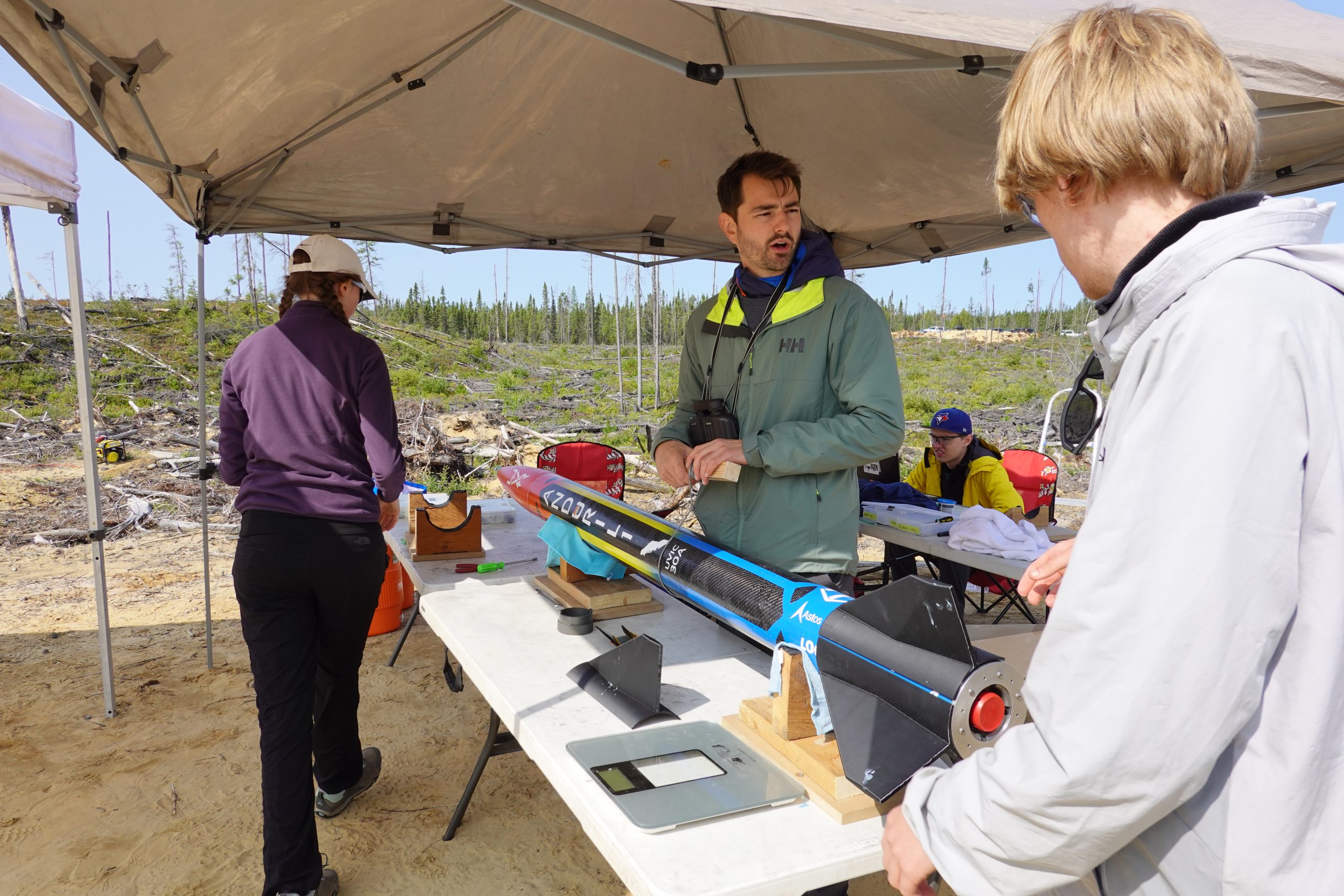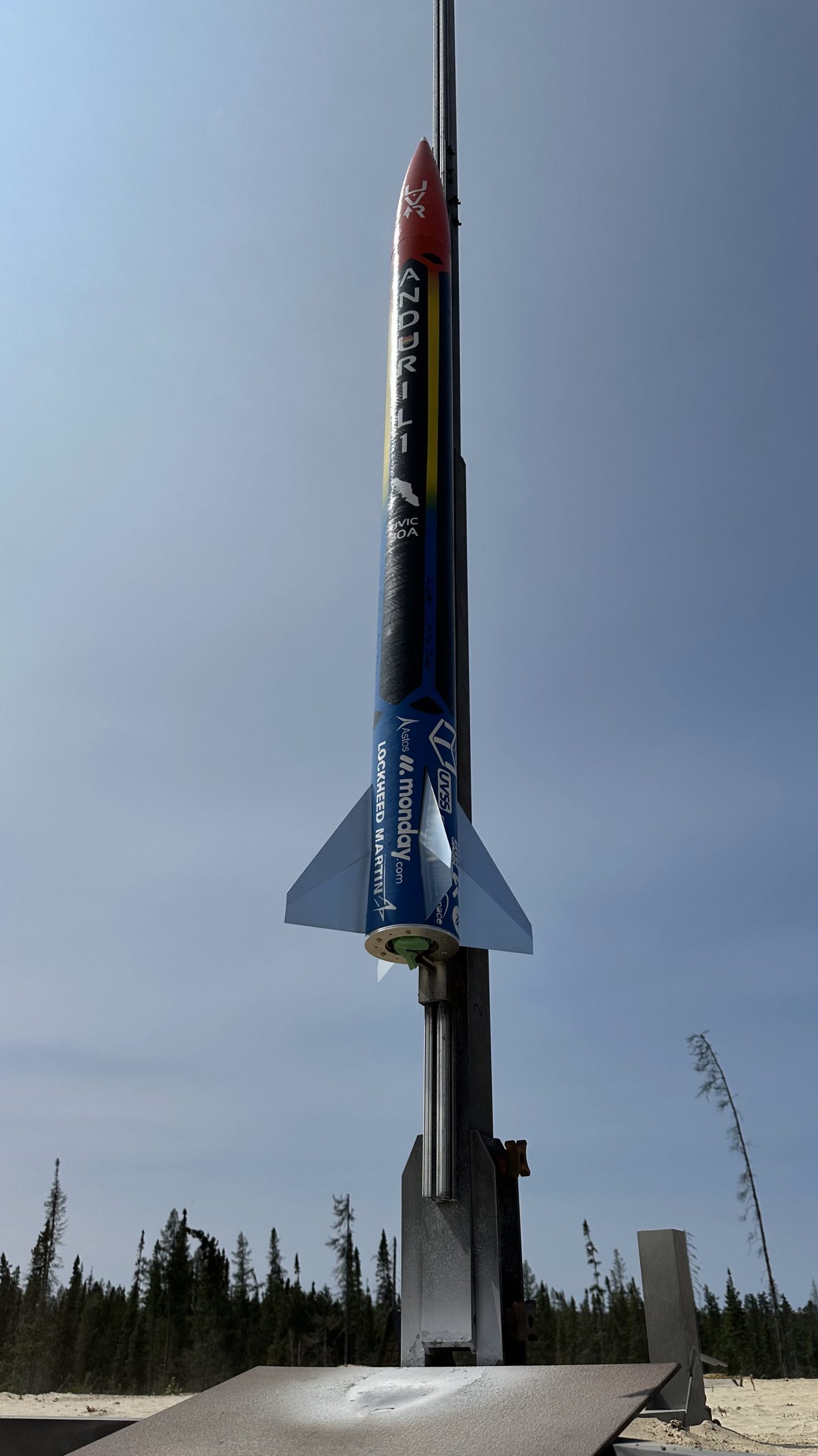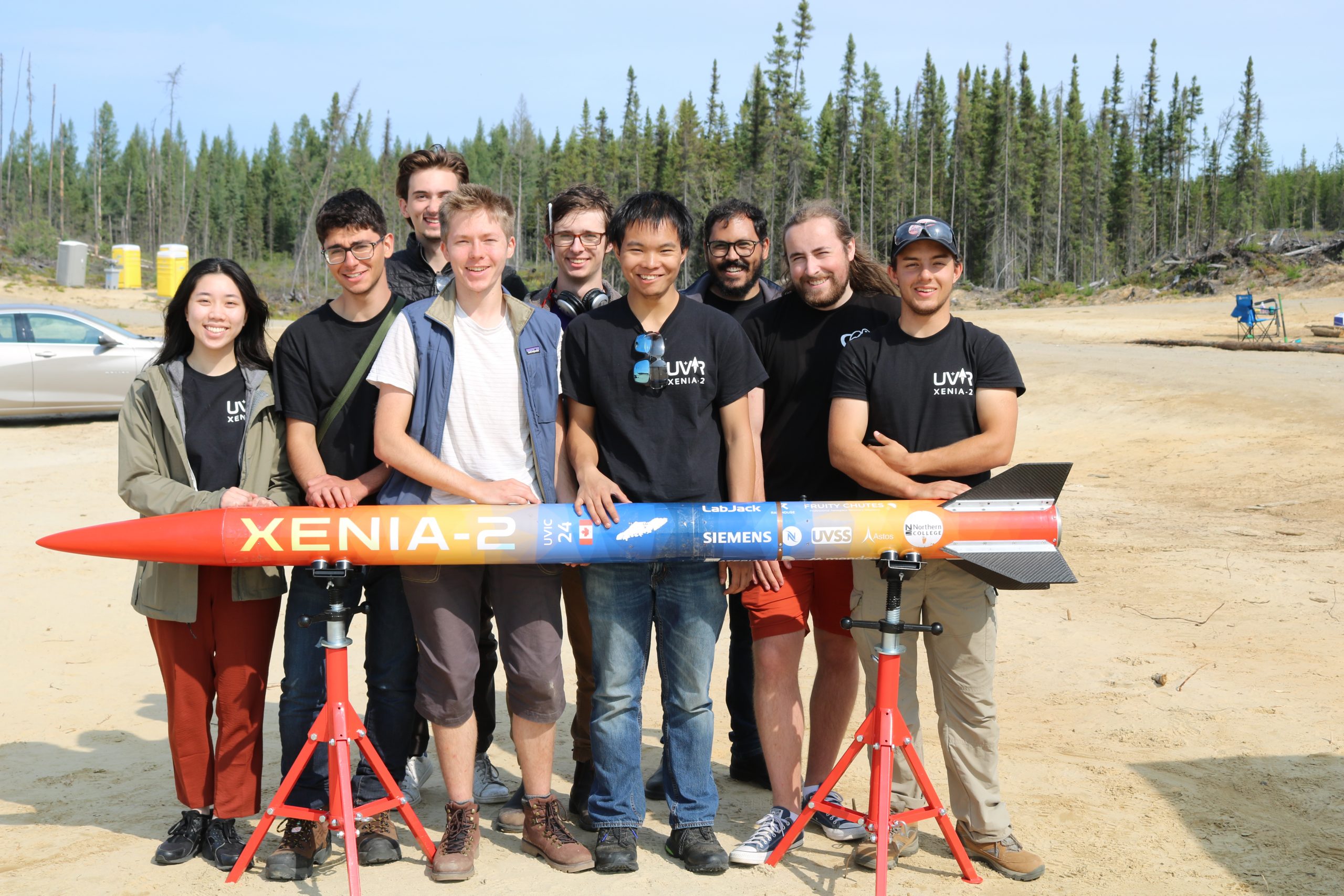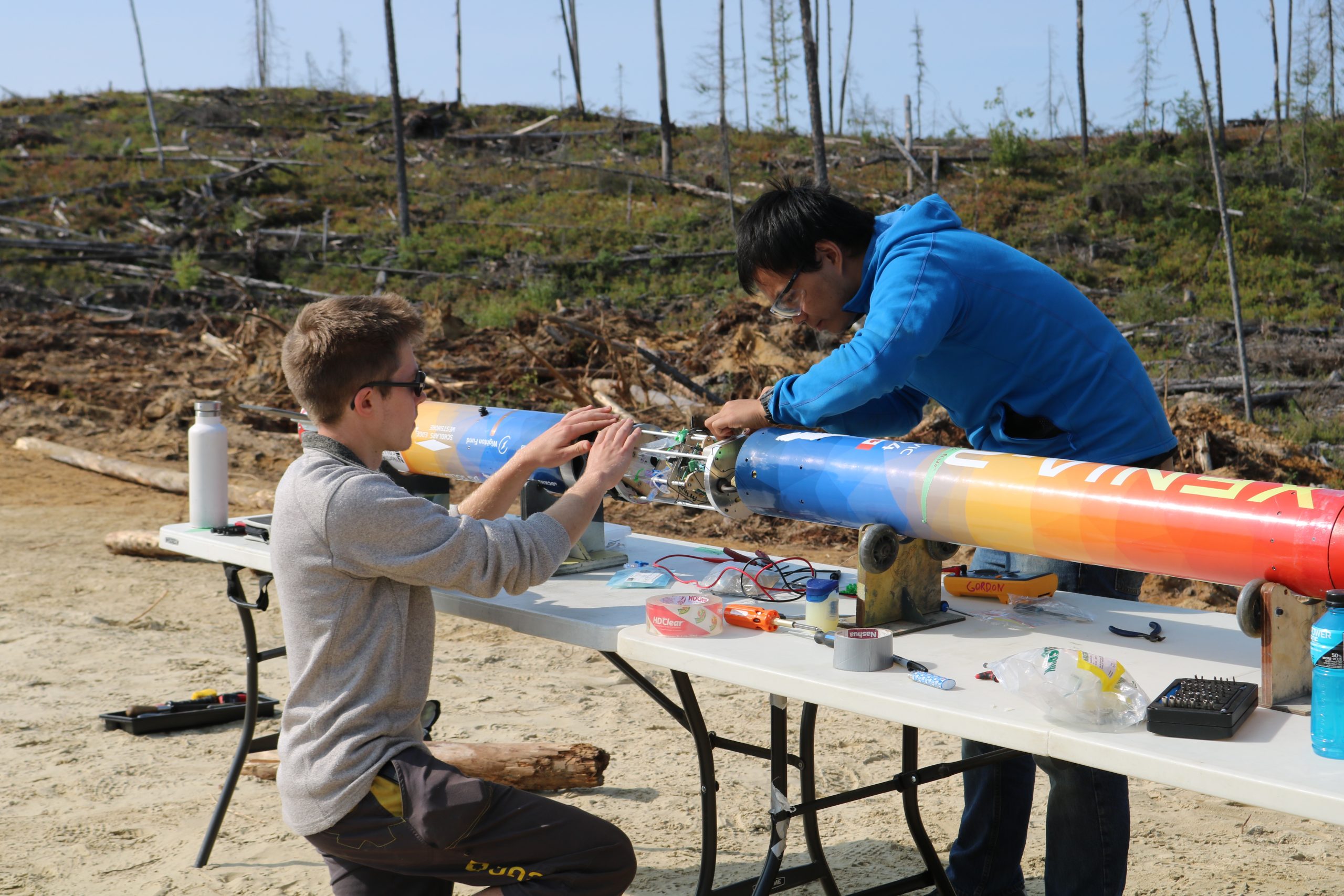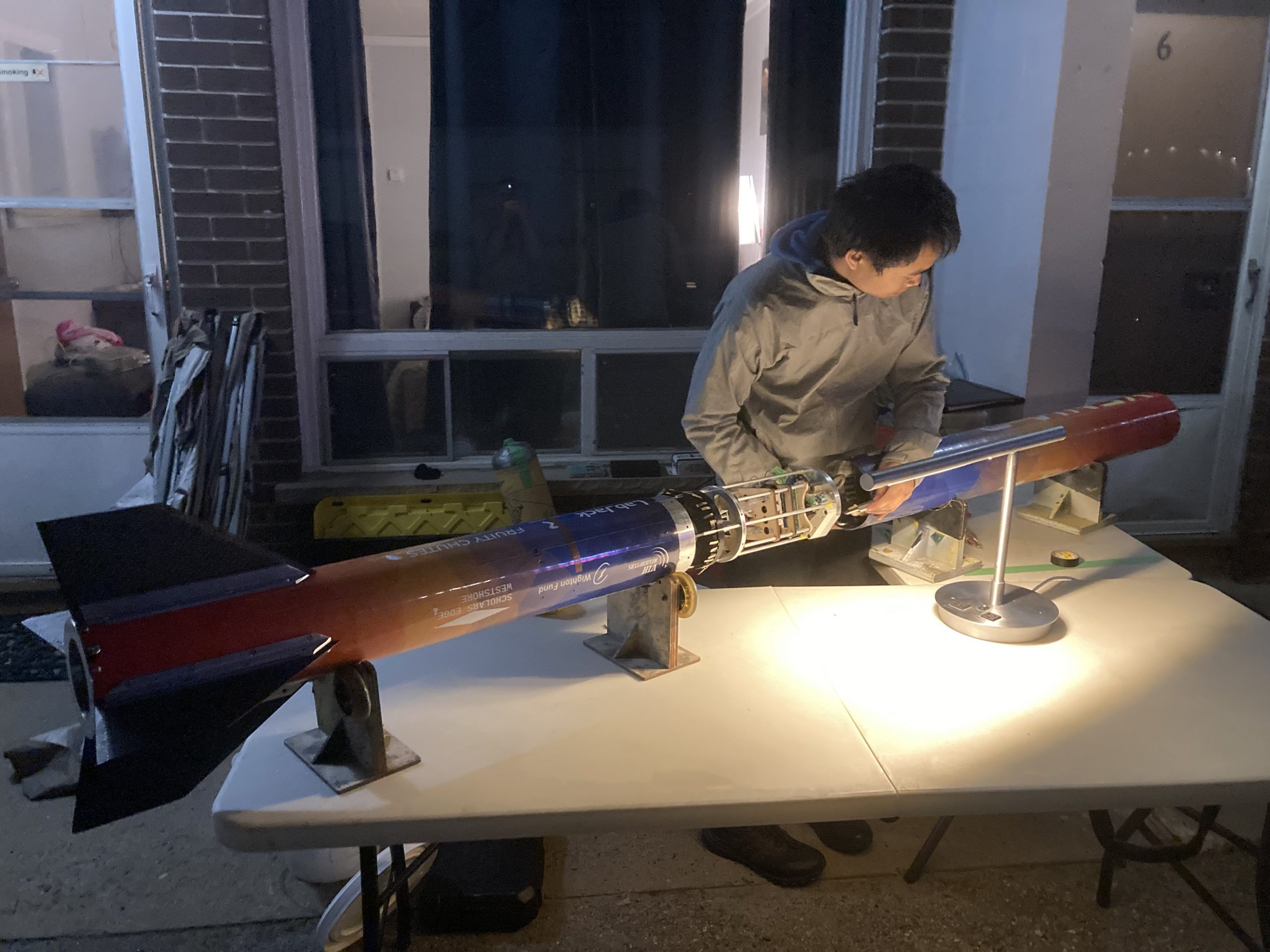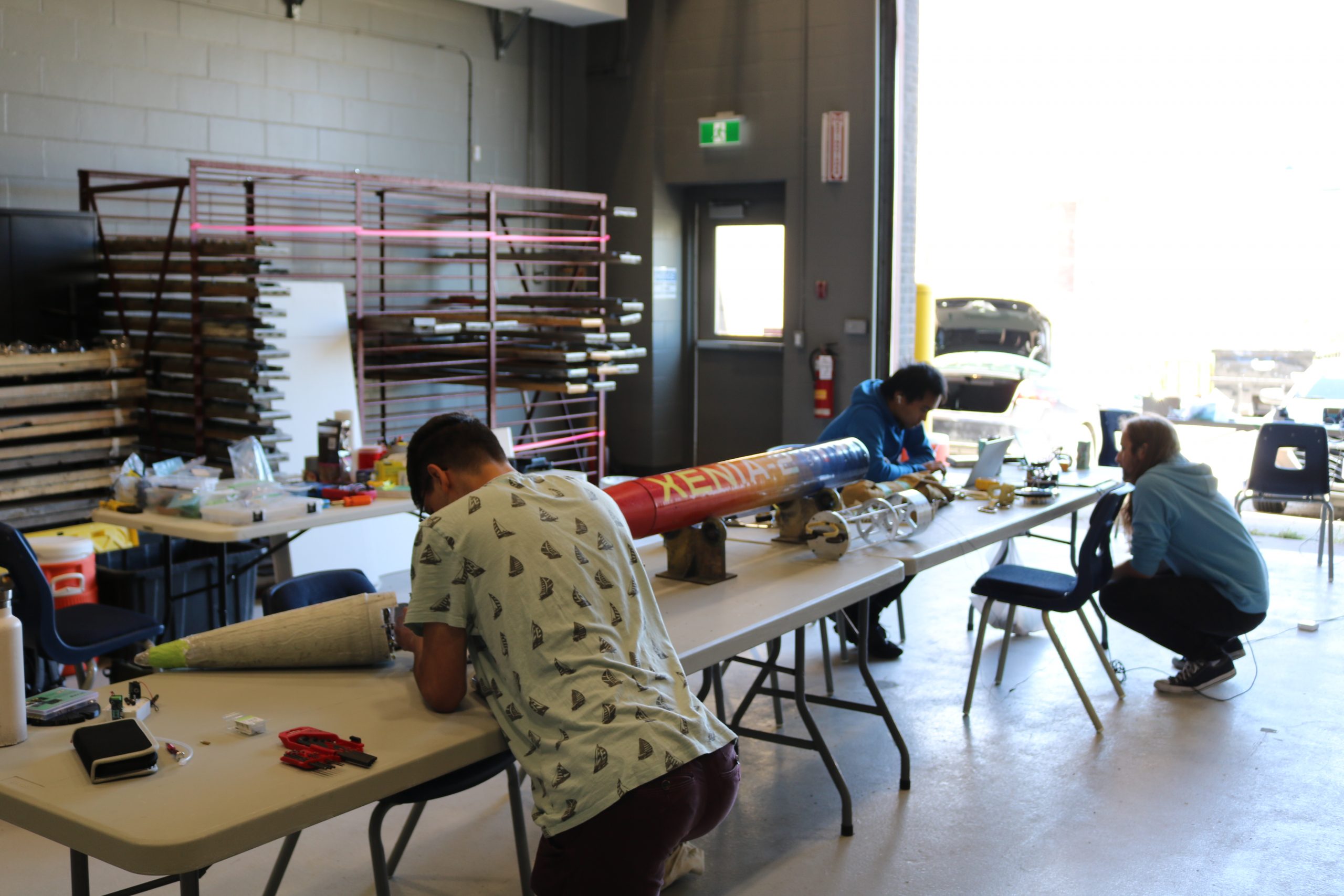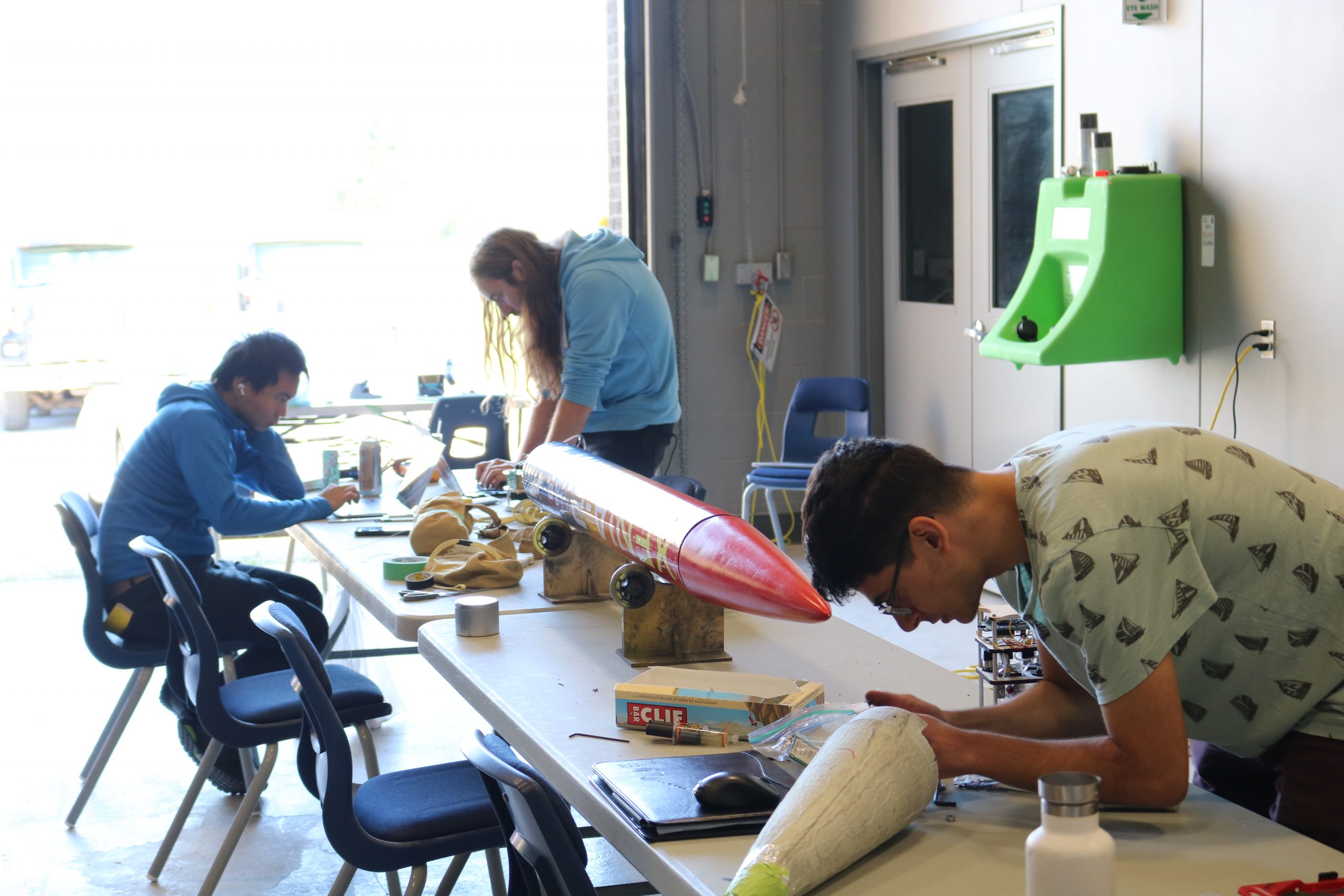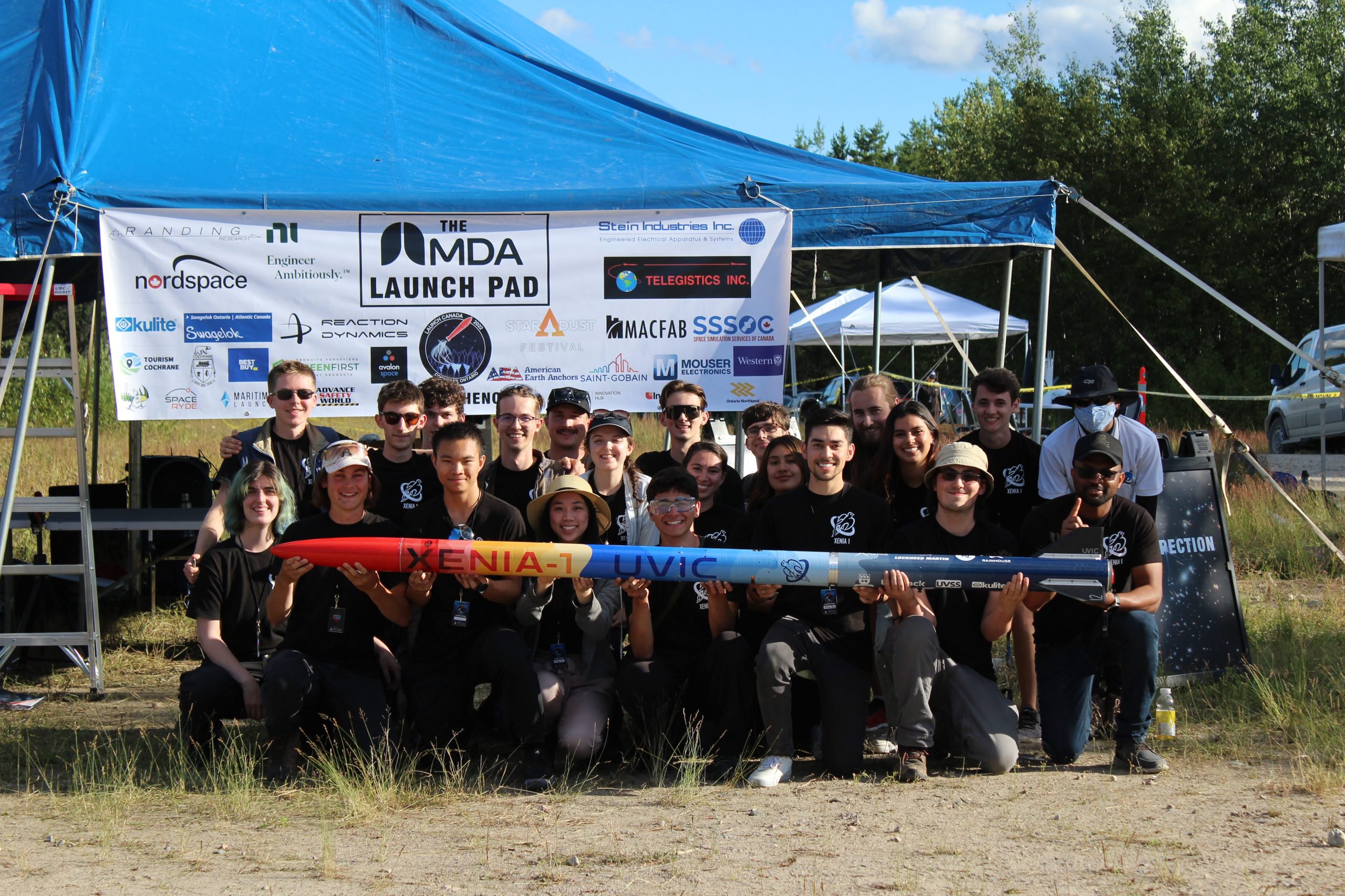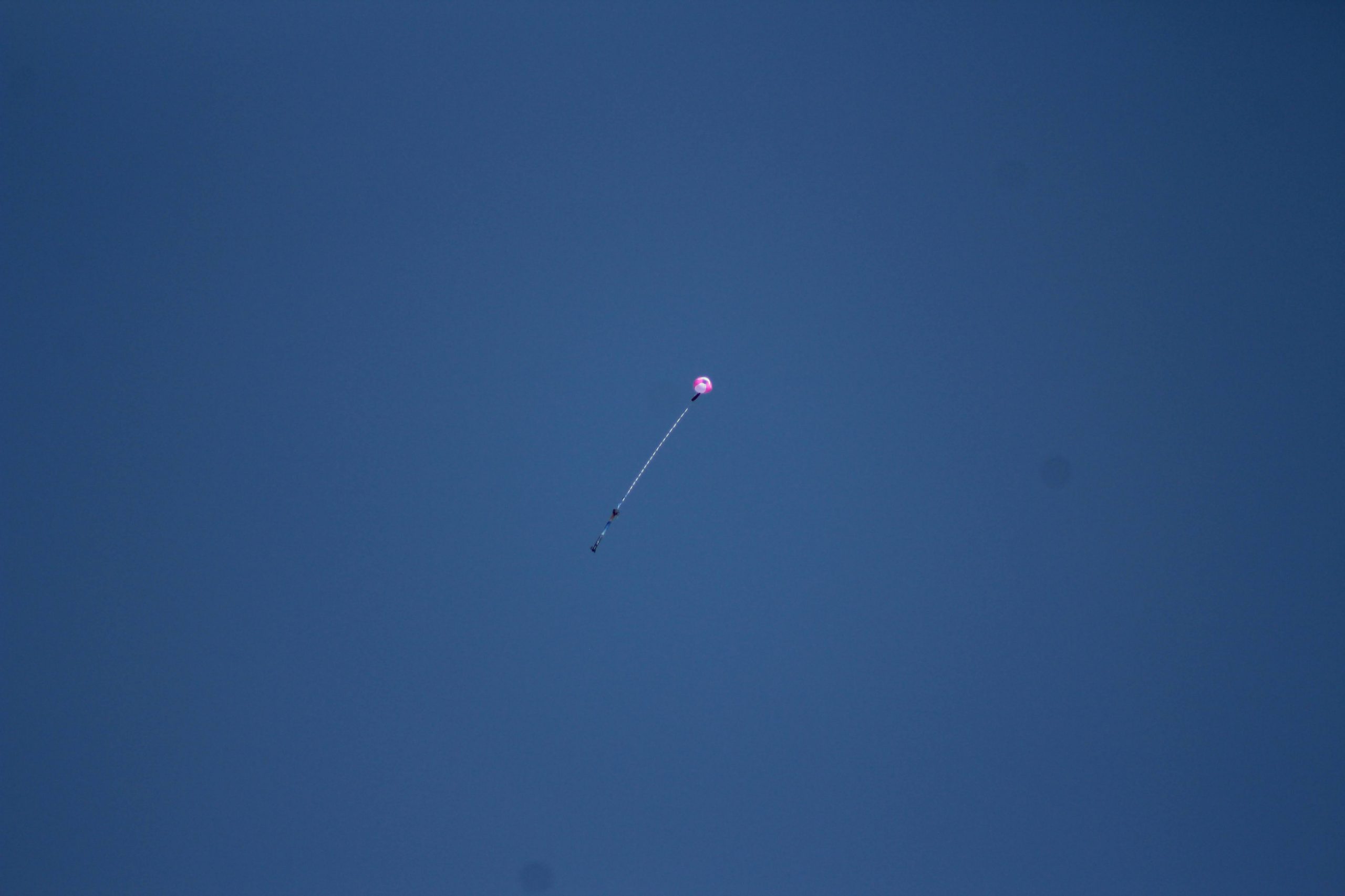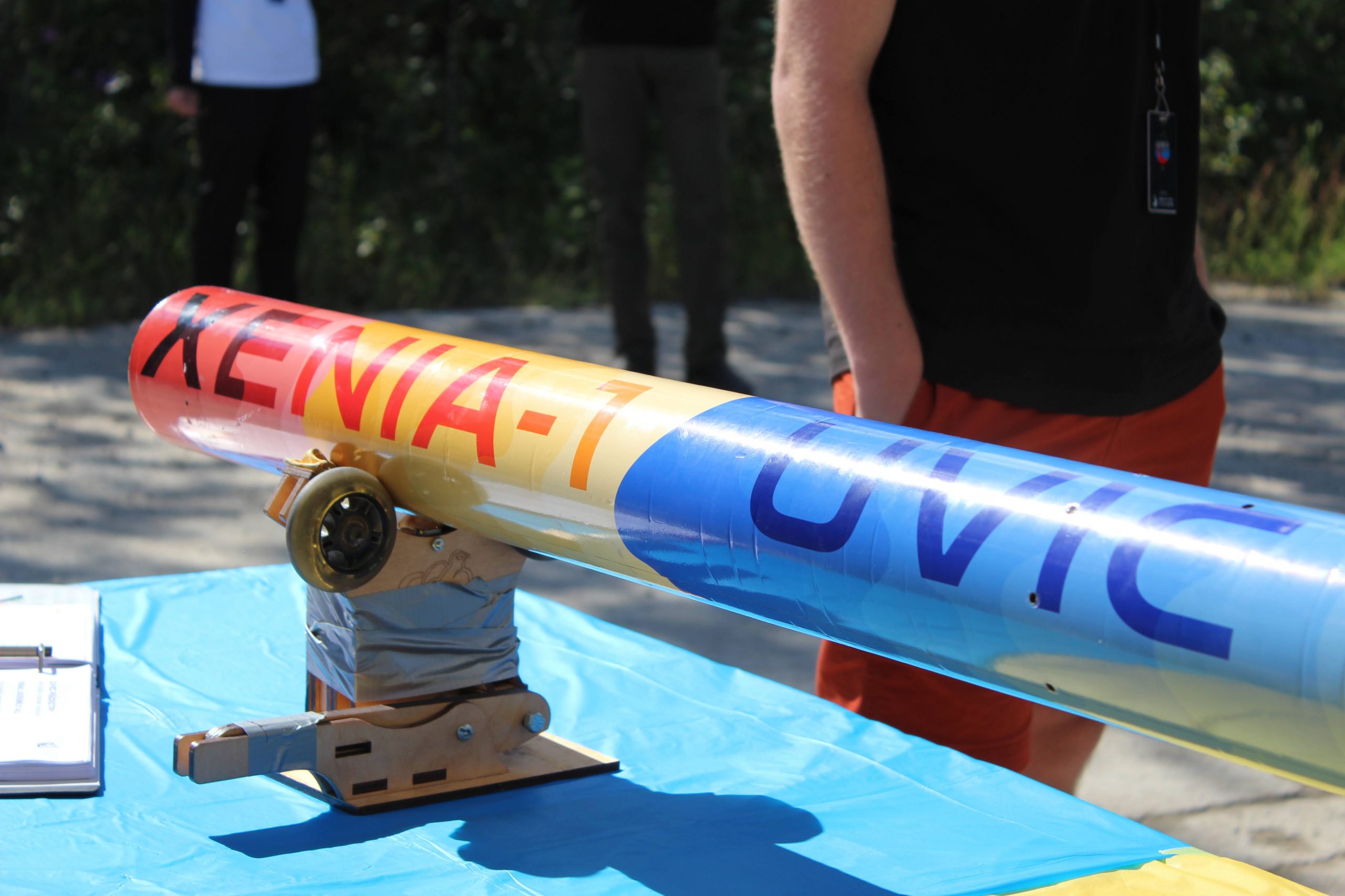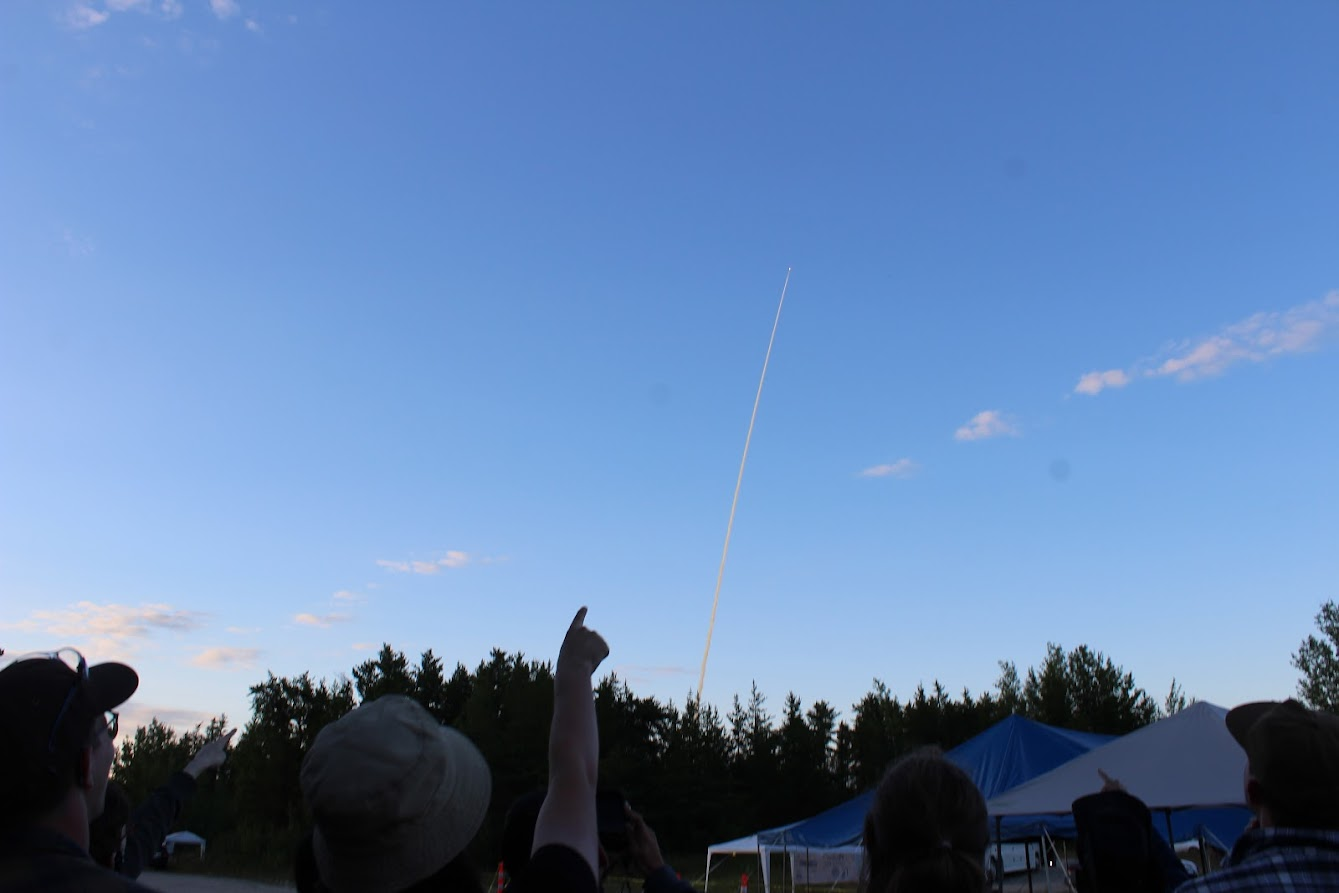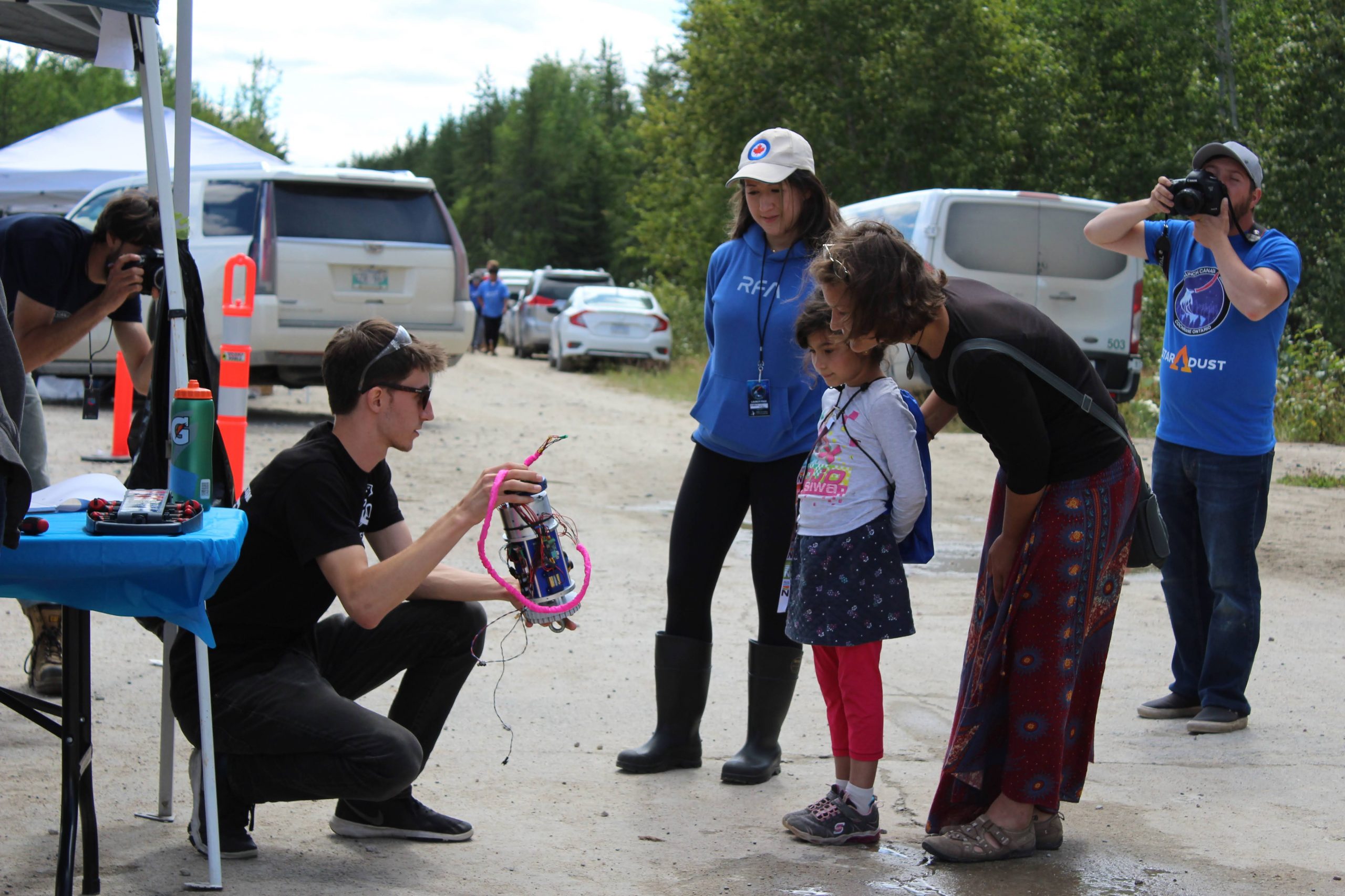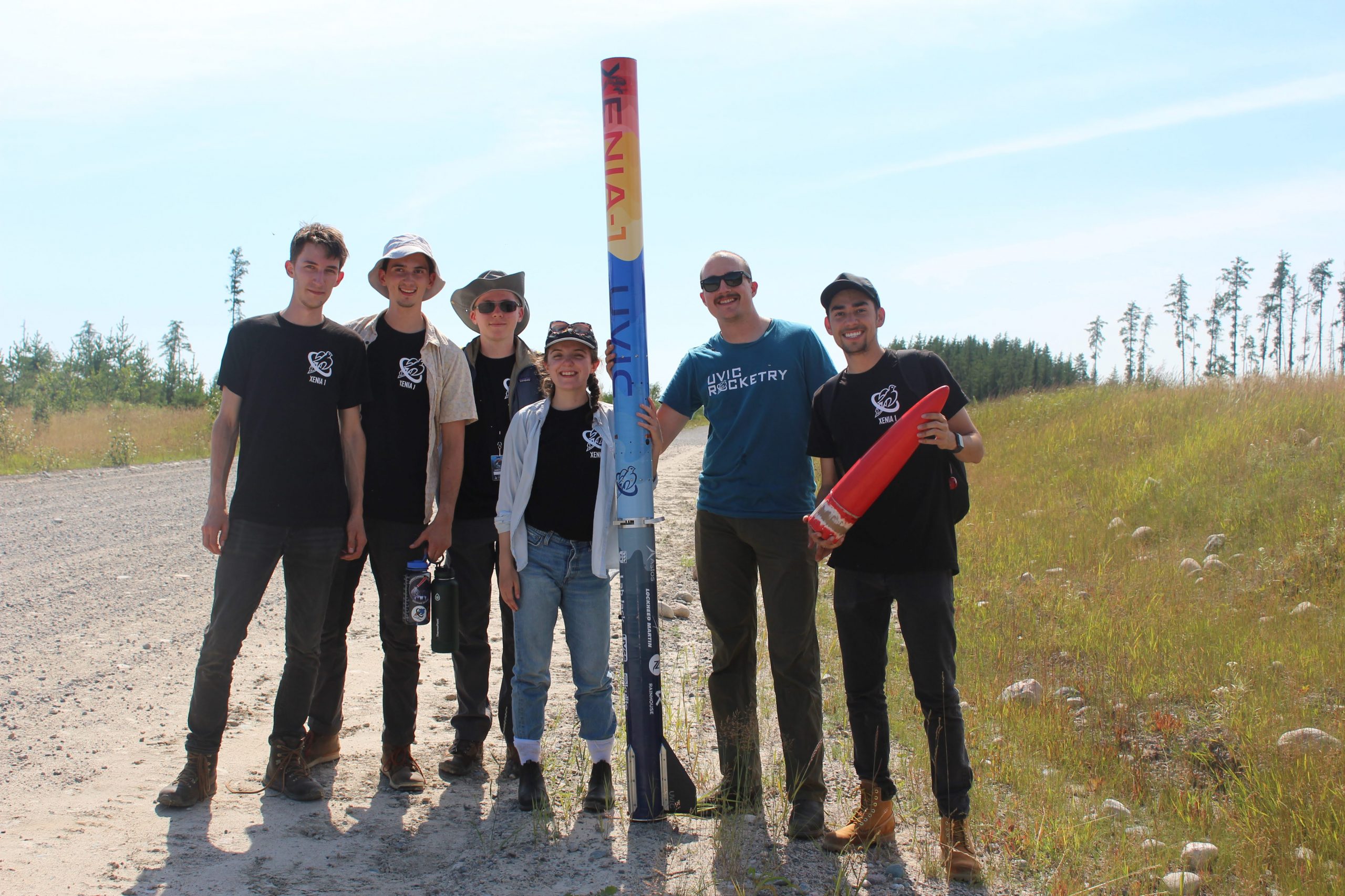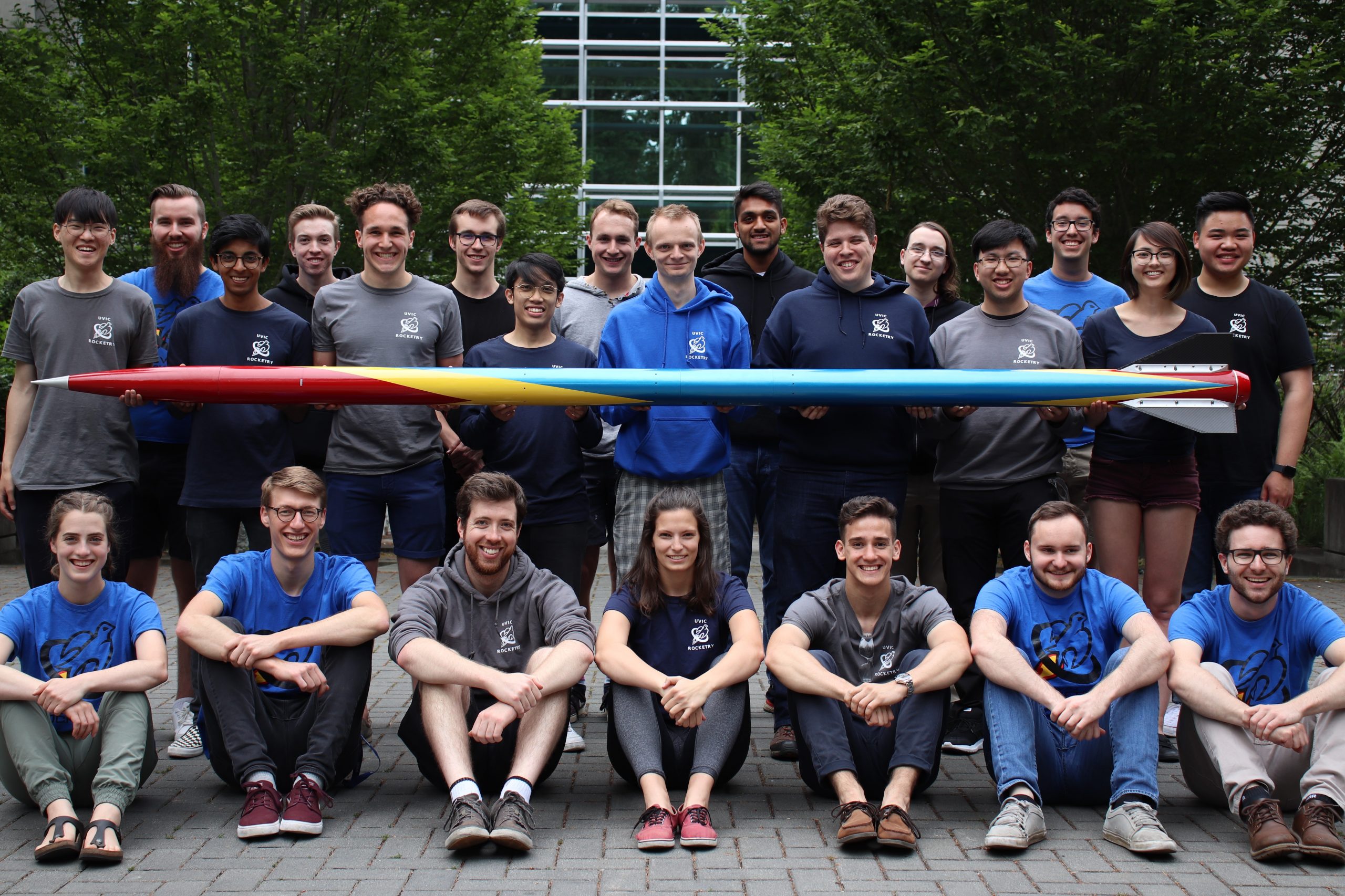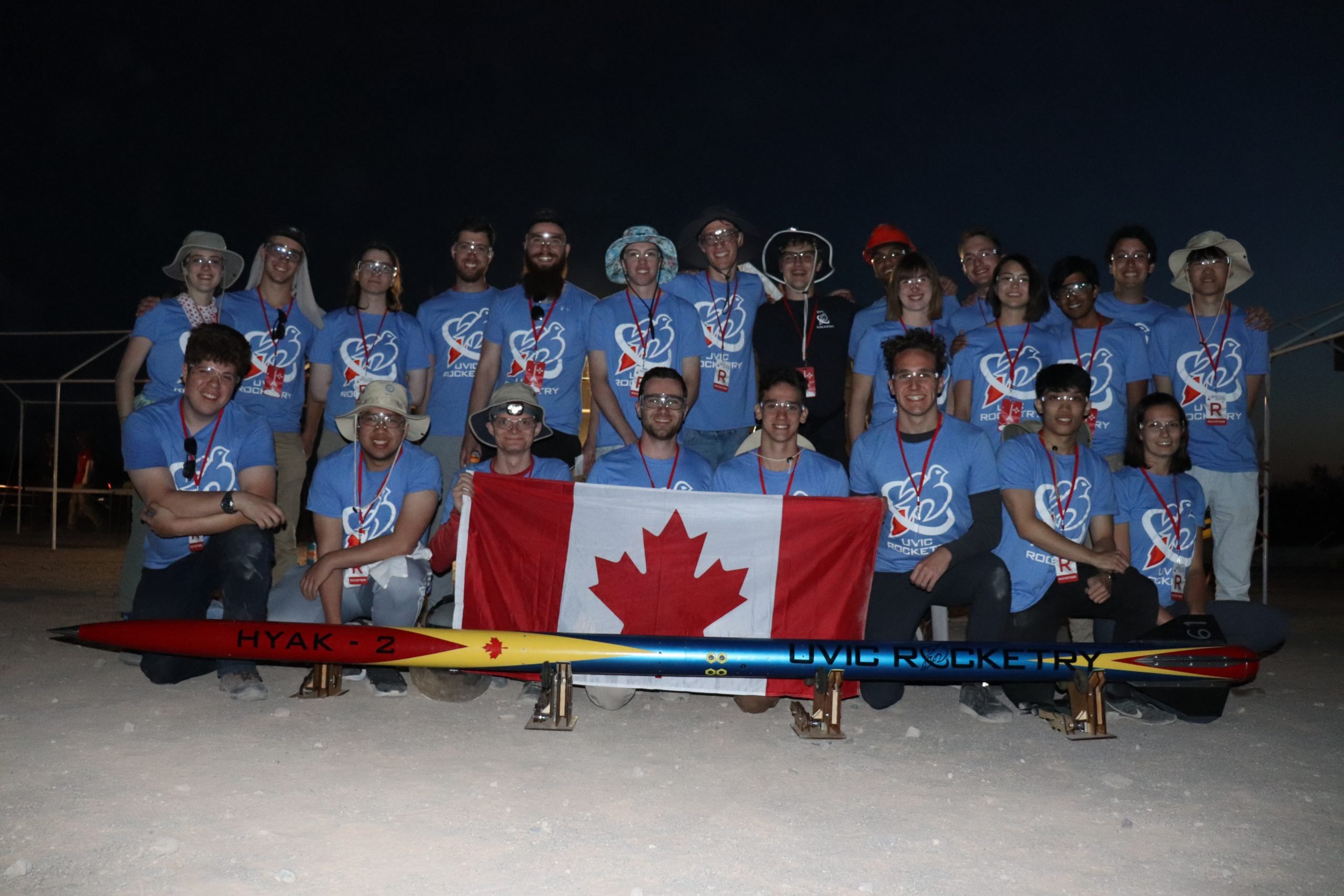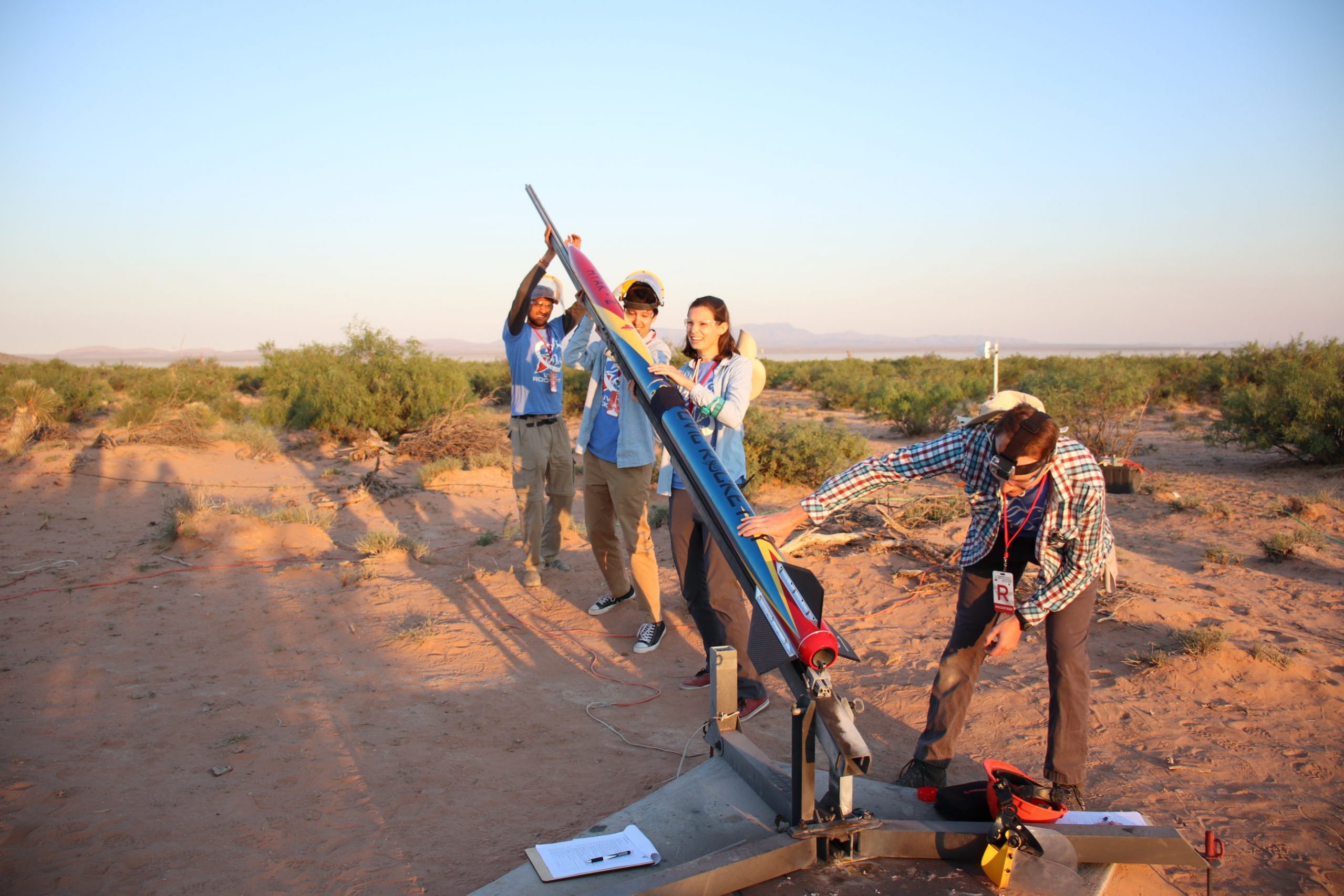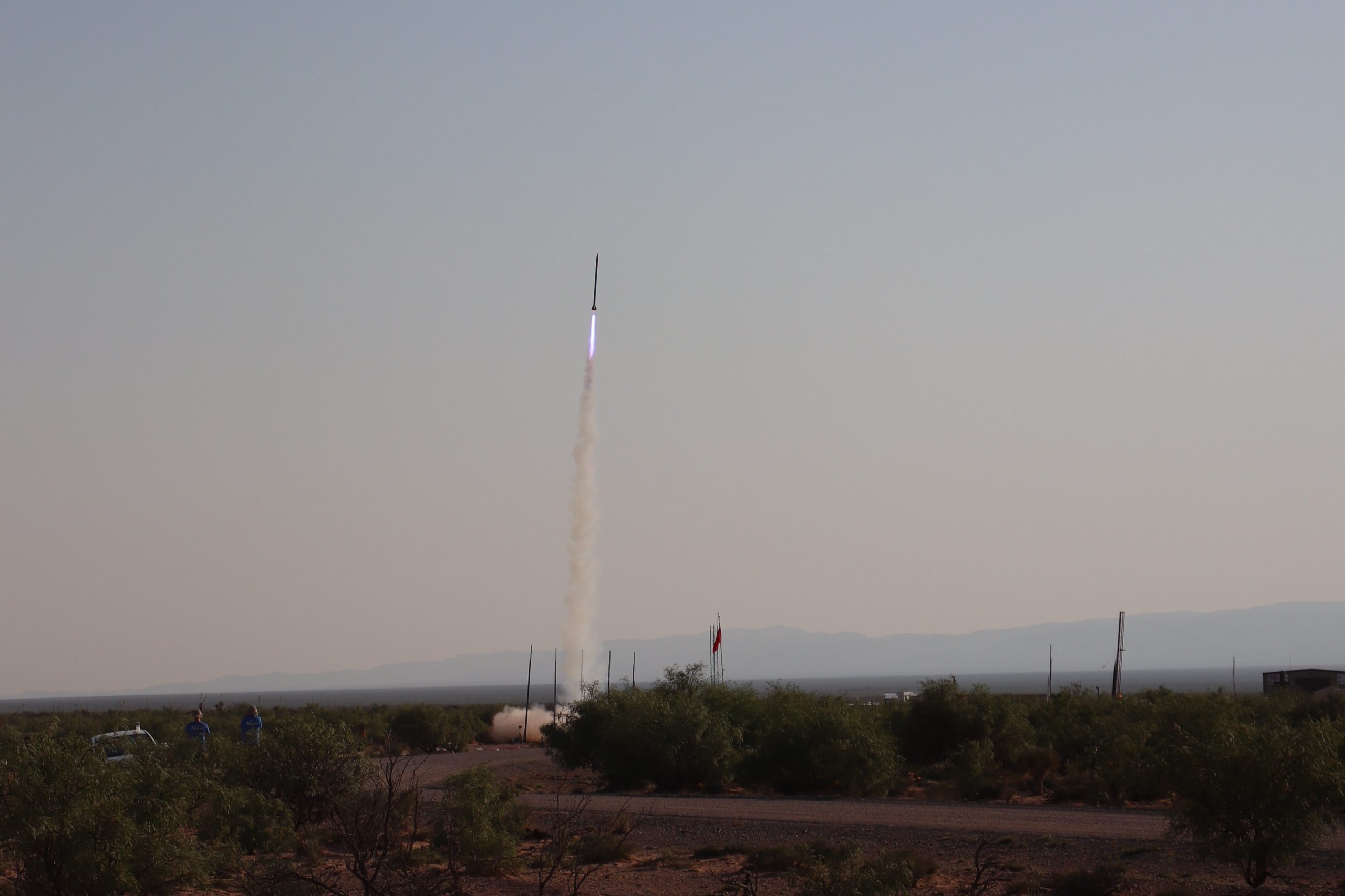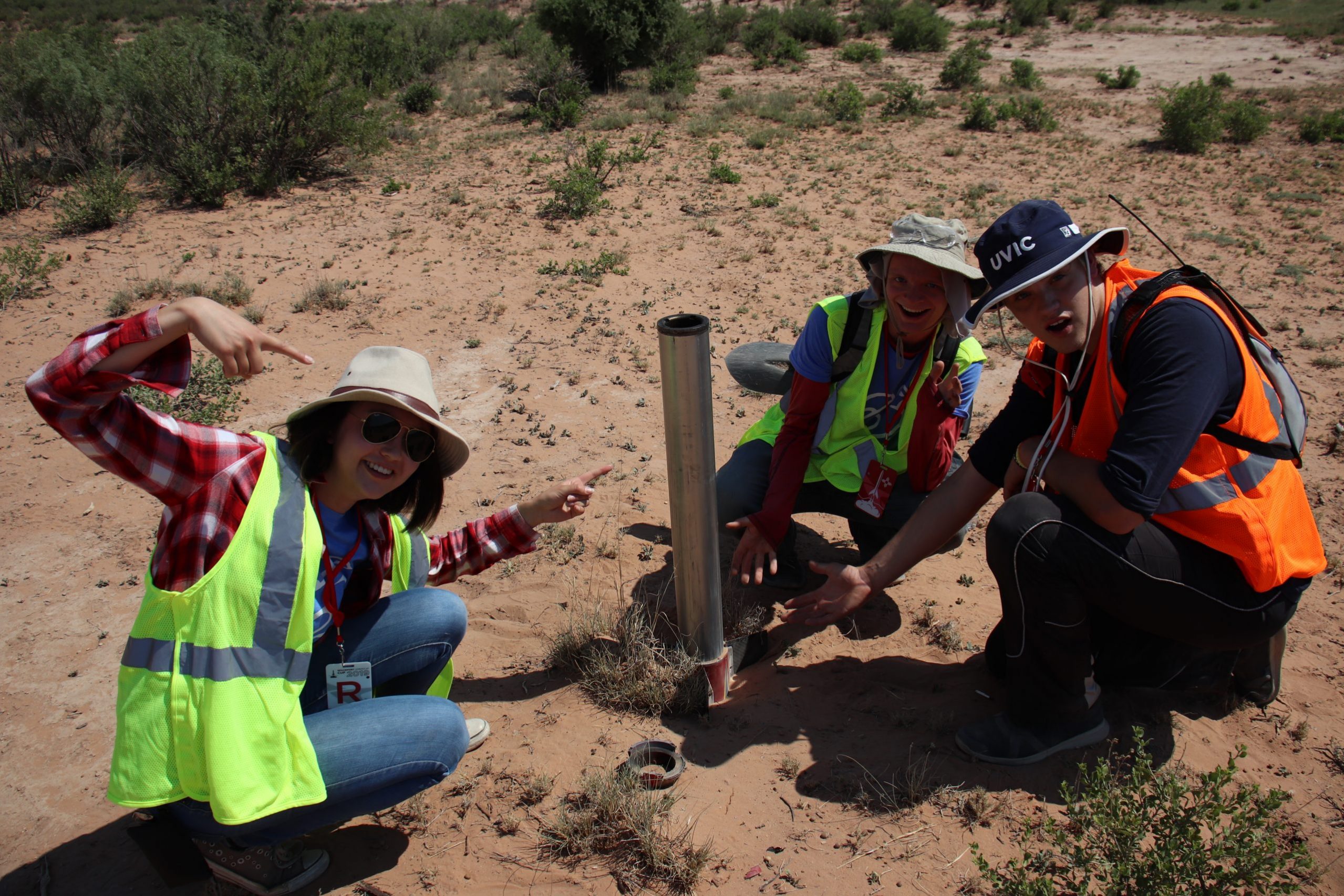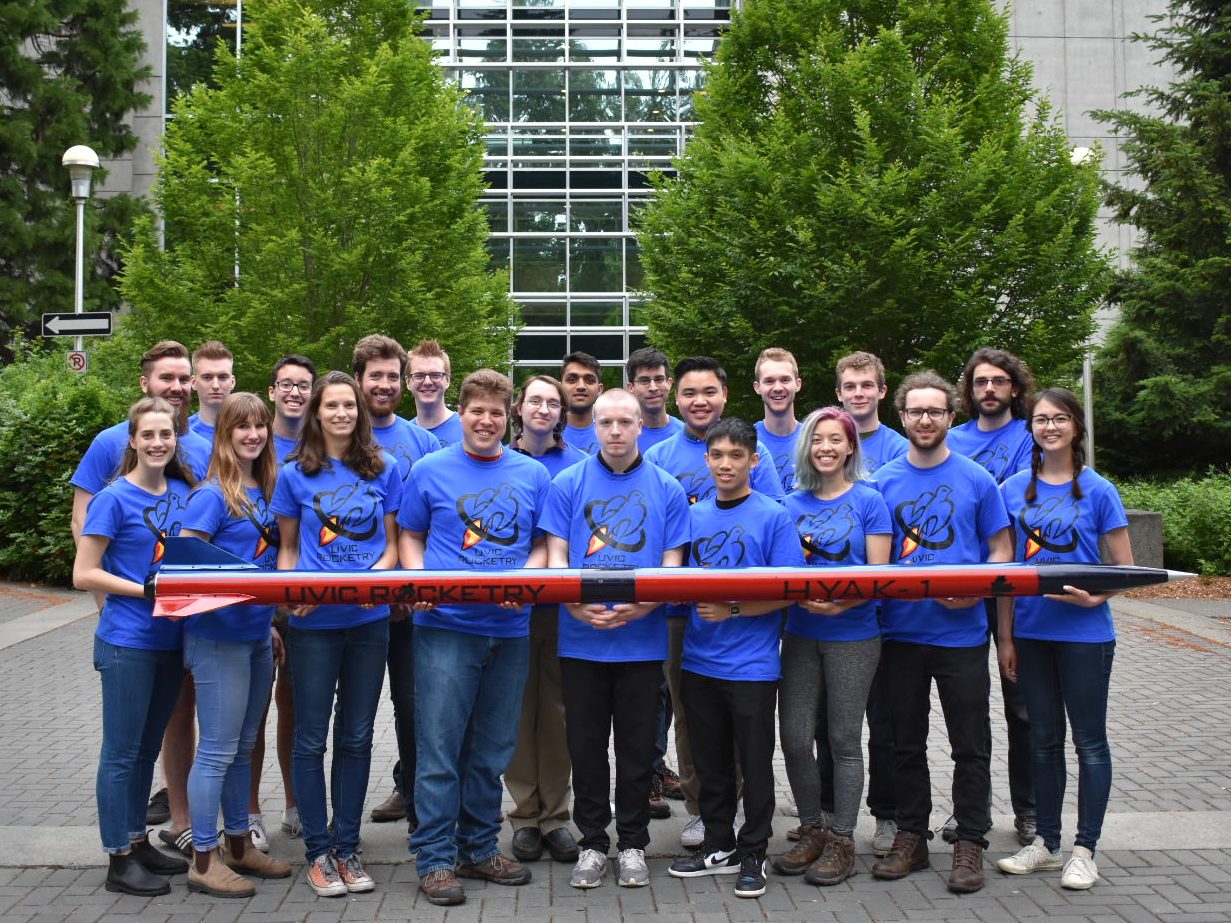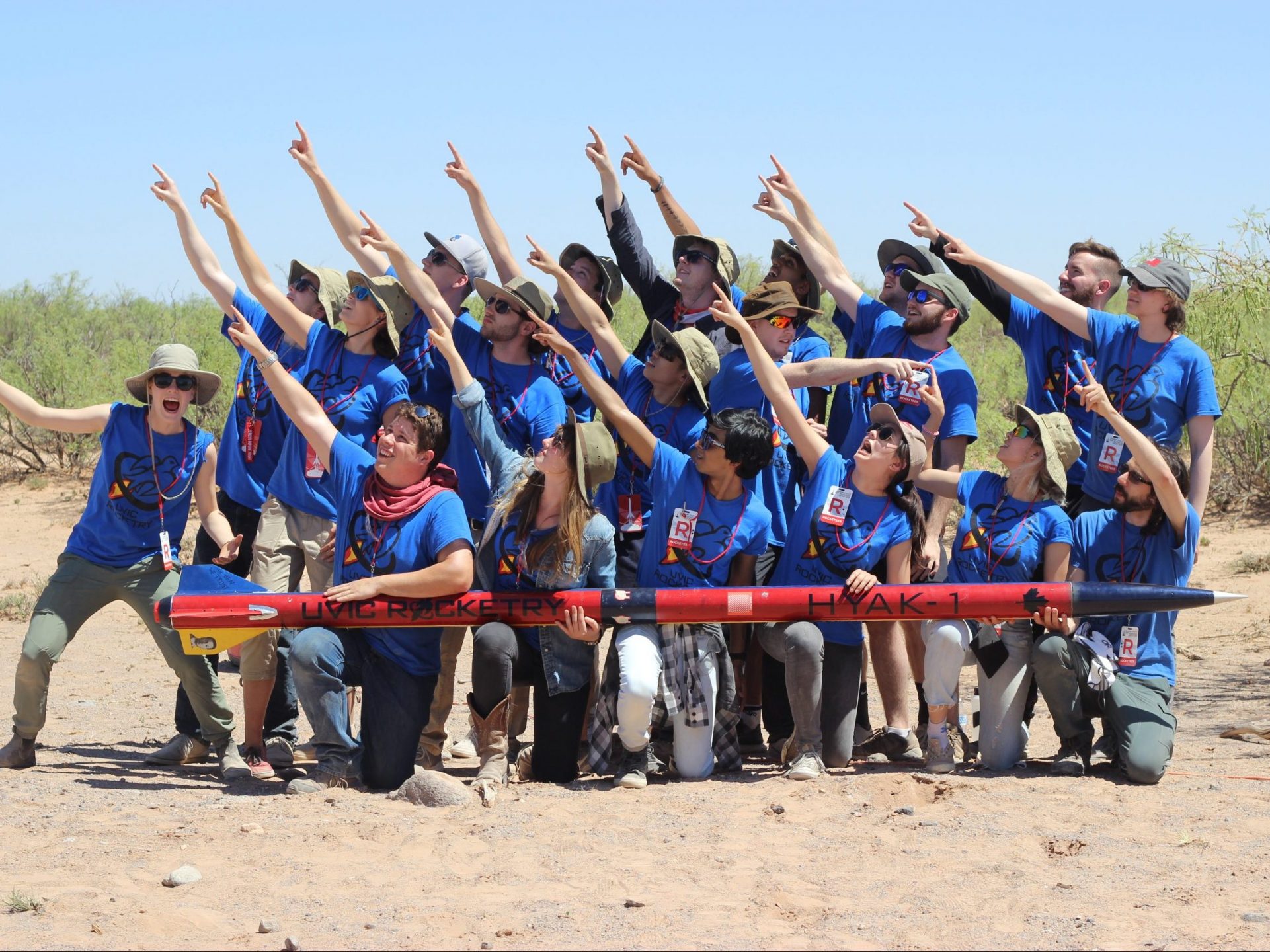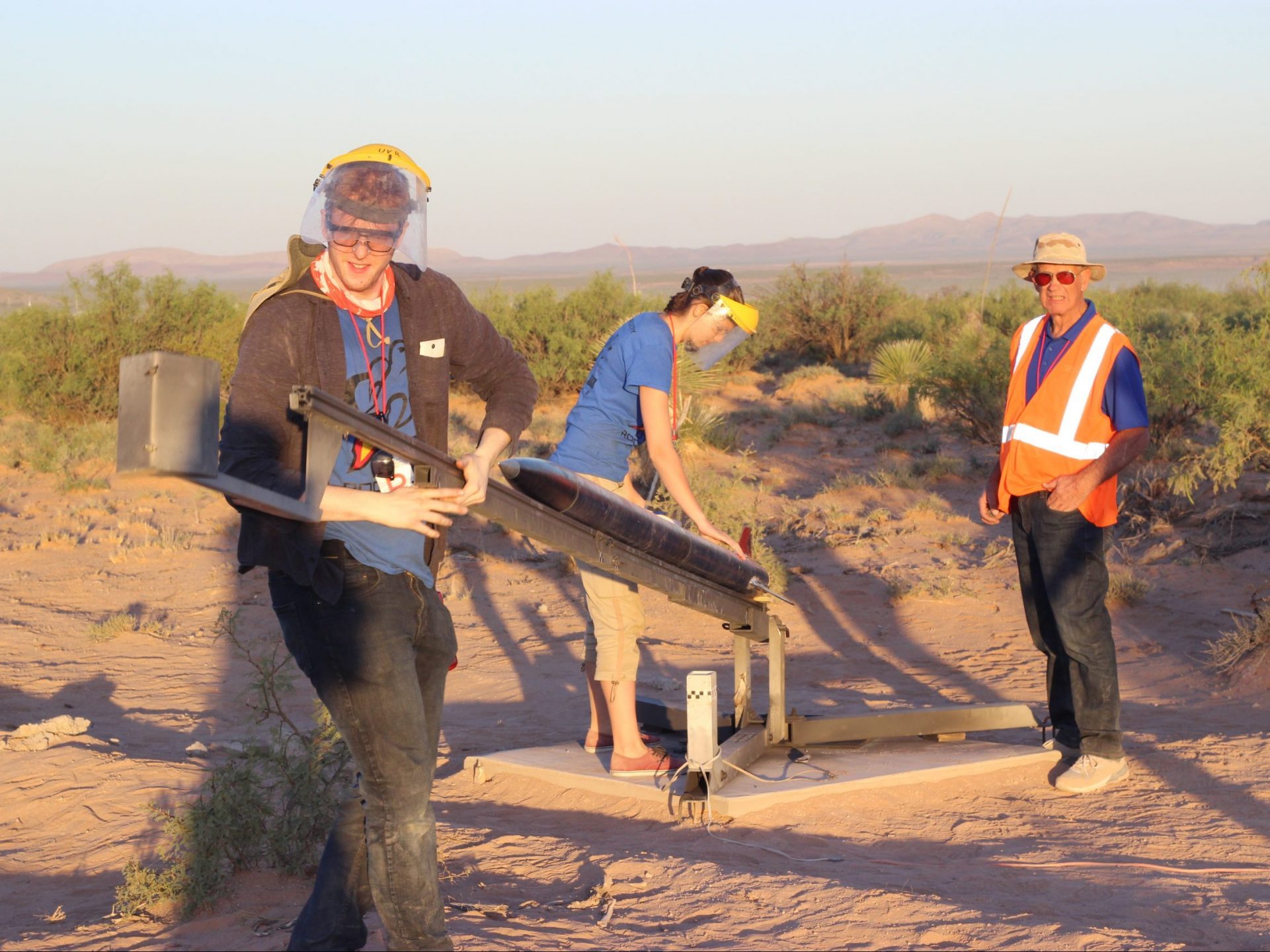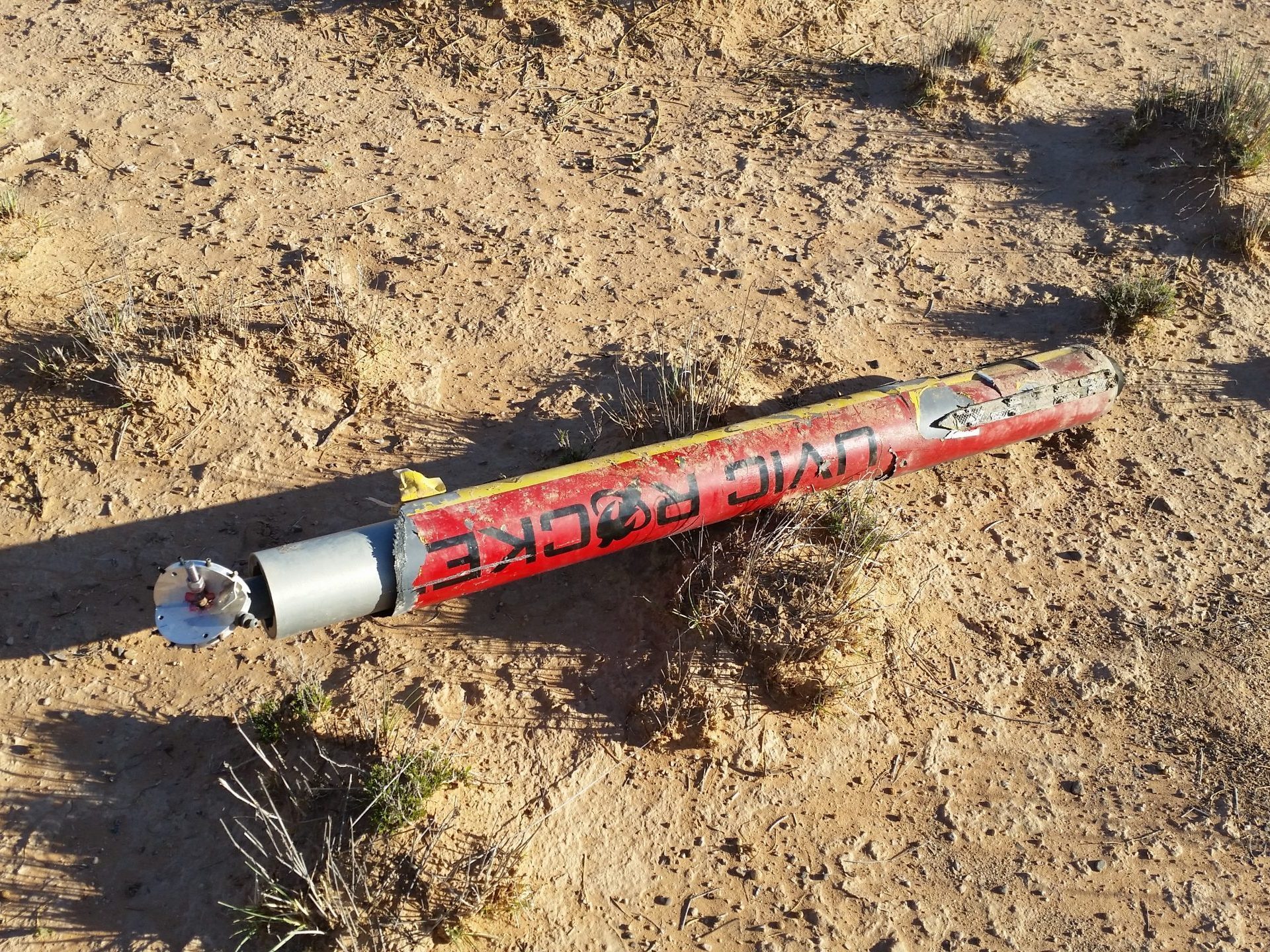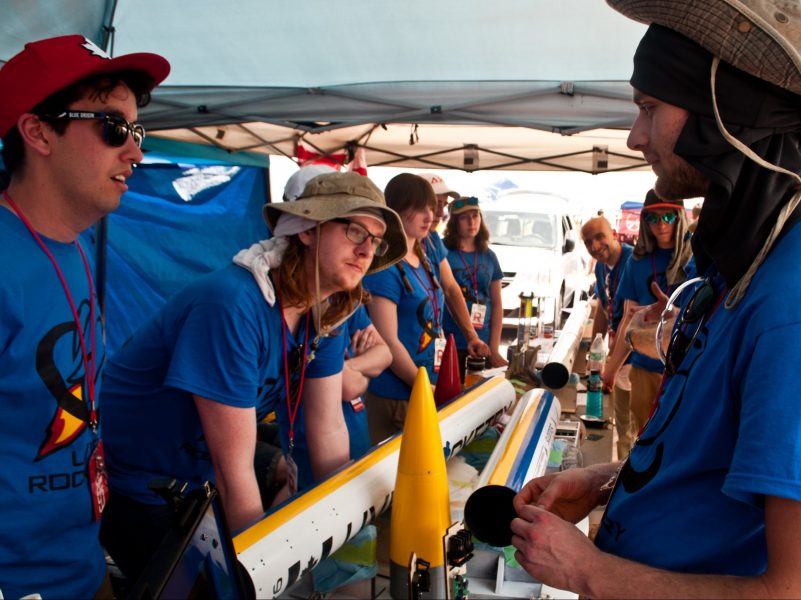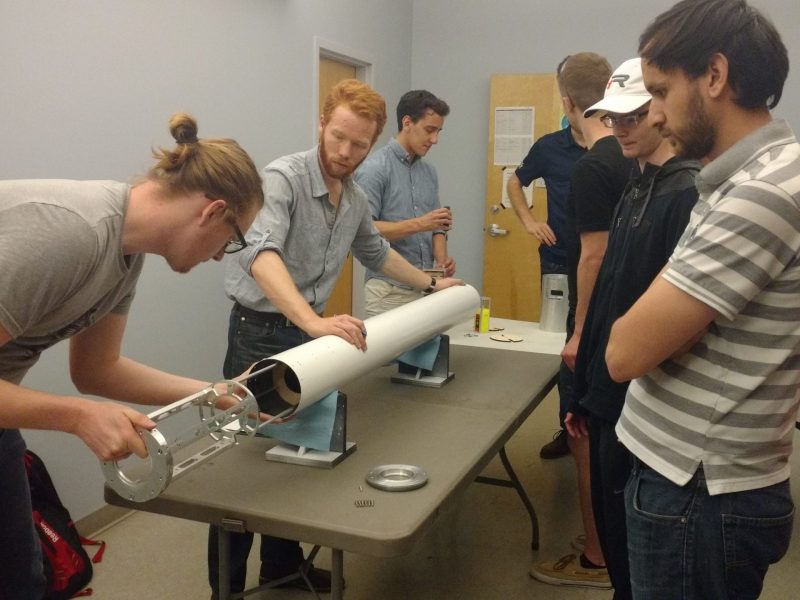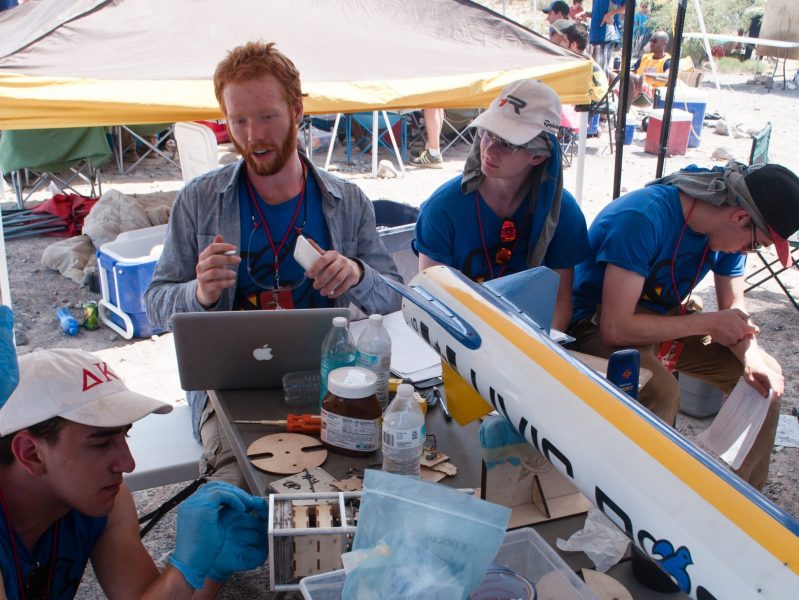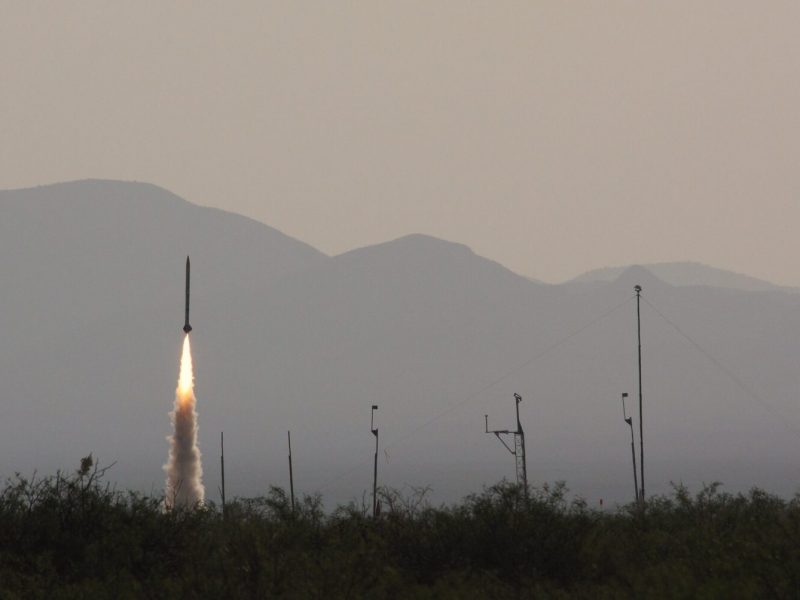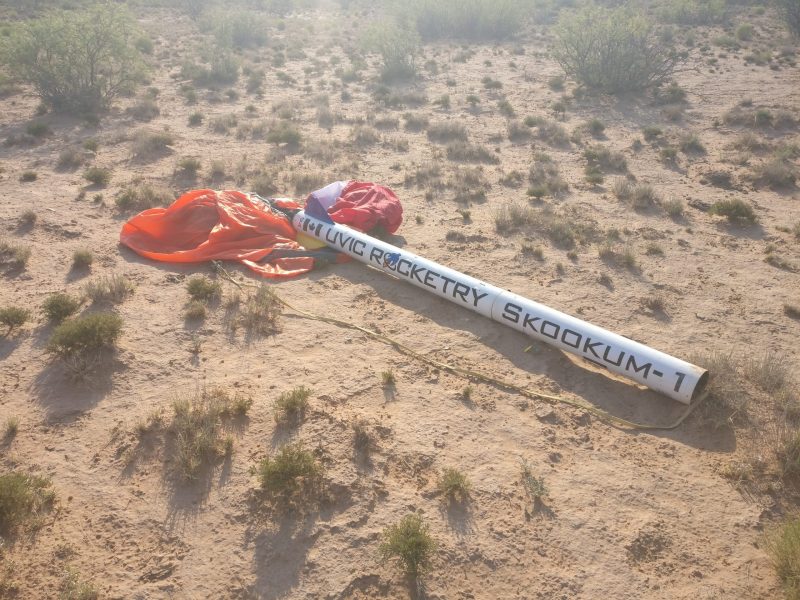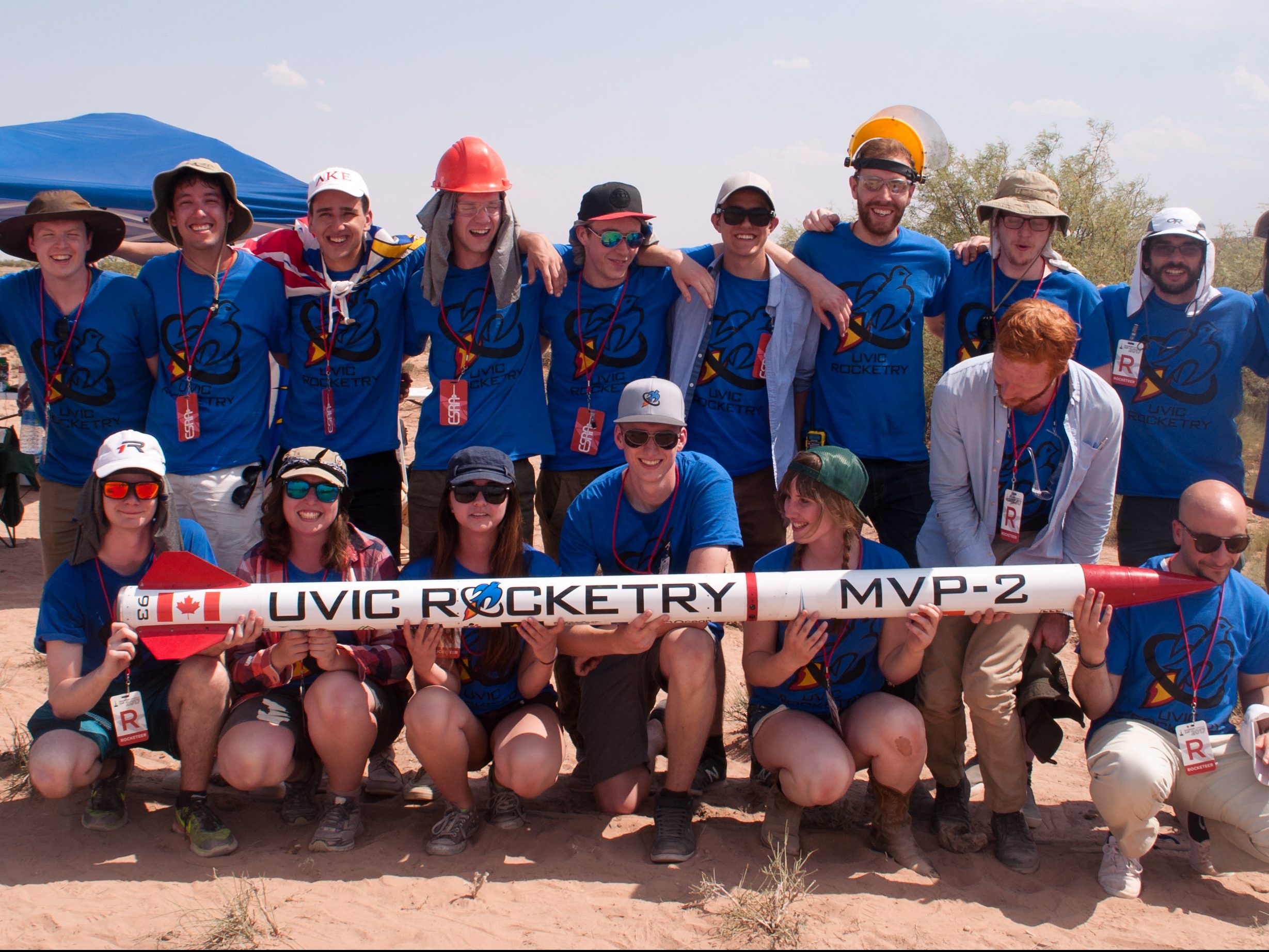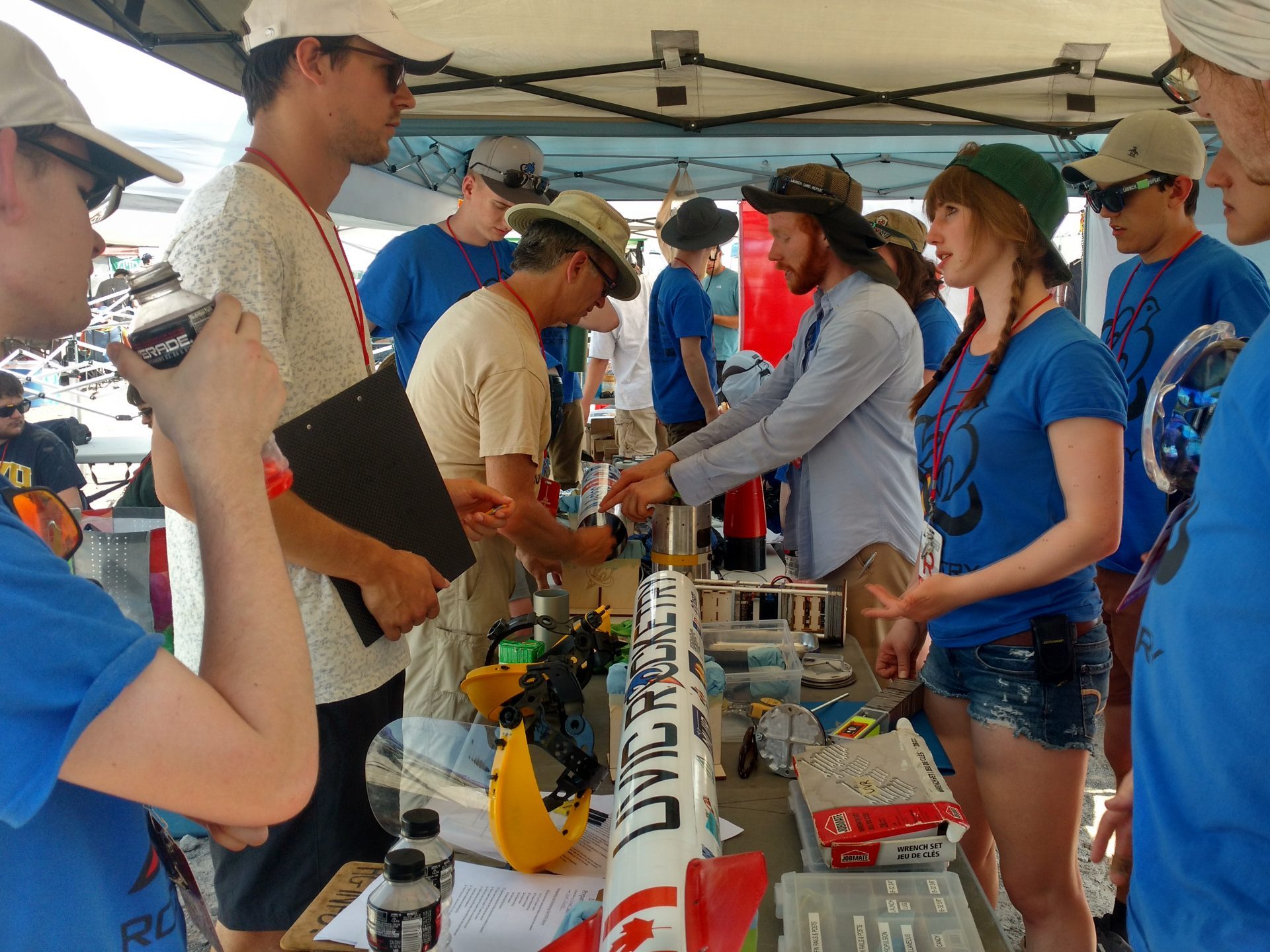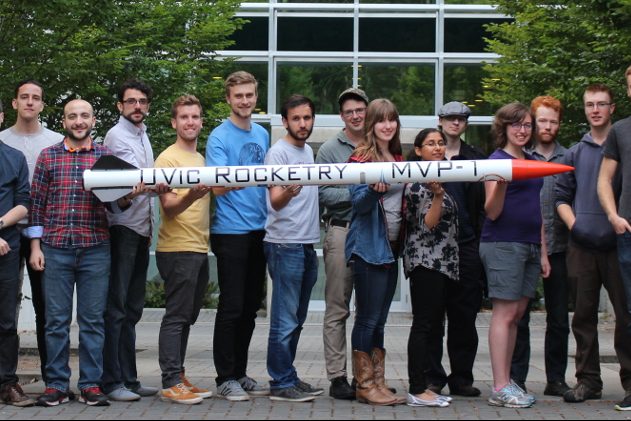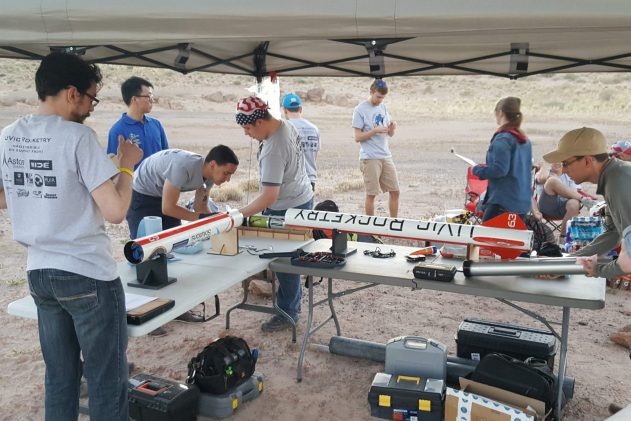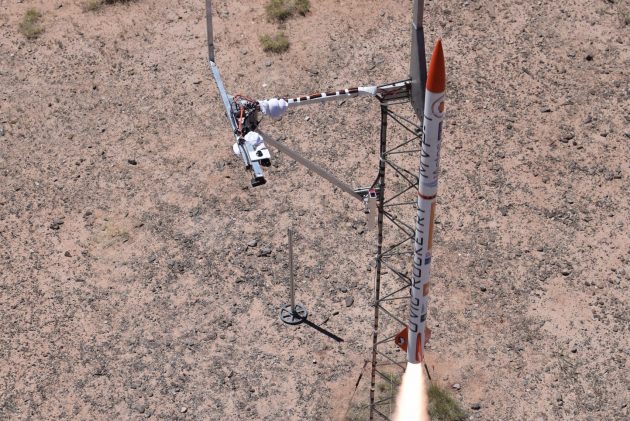ANDURIL-2
Launch Canada 2025
30k Solid COTS

Anduril-2 was built upon the Anduril-1 flight architecture, being the second successful supersonic rocket built by the club. With a focus on documentation, analysis, and manufacturing, Anduril-2 even further pushed the club’s altitude and speed records, placing the club firmly in 5th place at Launch Canada 2025.
Dimensions
Length: 2.50m (8 ft 2in)
Diameter: 15.1 cm (5.95 in)
Lift-off mass: 31.2 kg (58.4 lbs)
Payload
The CubeSat was Anduril-2’s payload and was designed by the University of Victoria Satellite Design Club (UVSD). This payload acted as a proof of concept of UVSD’s ability to design descent, telemetry, and tracking systems, and was intended to be deployed separately from the nosecone at apogee. Unfortunately, due to time constraints, the CubeSat did not utilize its deployment mechanism during flight.
Propulsion
Motor: Cesaroni Technologies O3400
Max thrust: 4750.3 N (1067.9099224 lbs)
Max speed: 2716 km/h (Mach 2.2)
Performance
Predicted Apogee: 31,084 ft AGL
Actual Apogee: 32,694 ft AGL
Competition Performance: Anduril-2 was the second rocket by UVR to break the sound barrier, reaching a maximum speed of 2.2 times the speed of sound. After reaching apogee, the rocket did not successfully deploy its nosecone, resulting in a ballistic descent. It is known that the nosecone did deploy at some point; however, the time at which it activated during descent is currently unknown.
ANDURIL-1
Launch Canada 2024
30k Solid COTS

Anduril-1 was the club’s very first successful supersonic rocket. Using an N-class commercial off-the-shelf motor, it reached supersonic speeds in less than 8 seconds of motor burn.
Dimensions
Length: 2.38m (7 ft 10in)
Diameter: 13.9 cm (5.5 in)
Lift-off mass: 26.5 kg (58.4 lbs)
Payload
The Anduril-1 rocket did not contain any payload due to the club’s focus on making a minimum viable product supersonic rocket.
Propulsion
Motor: Cesaroni Technologies N2540
Max thrust: 2915 N (655.2 lbs)
Max speed: 1919.6 km/h (Mach 1.55)
Performance
Predicted Apogee: 27,686 ft AGL
Actual Apogee: 24,118 ft AGL
Competition Performance: The rocket successfully reached it’s apogee without any issues, successfully breaking the sound barrier. Unfortunately at apogee, the main parachute was deployed which resulted in the rocket drifting 10km from the launch site. The rocket was then recovered without any issues, with all components intact. Overall, it was a very successful flight for the club.
Xenia-2
Launch Canada 2023
10k Solid COTS

Xenia-2 was the second Xenia-class rocket, and iterates upon some key projects and features from Xenia-1.
Dimensions
Length: 2.5 m (8 ft 2.4 in)
Diameter: 13.9 cm (5.5 in)
Lift-off mass: 21.0 kg (46.3 lbs)
Payload
Astrobiology experiment studying the effects of high acceleration on the folding of heat shock protein.
Propulsion
Motor: Cesaroni Technologies M2505
Max thrust: 2953 N (664 lbs)
Max speed: 1148.4 km/h (Mach 0.93)
Performance
Predicted Apogee: 9,593 ft
Actual Apogee: 9,340 ft
Competition Performance: Successful flight, almost nominal. Honorable mention for fastest recovery at Launch Canada 2023.
Xenia-1
Launch Canada 2022
10k Solid COTS

Xenia-1 was the team’s first rocket after the COVID-19 pandemic, and was built to test the performance of several experimental systems.
Dimensions
Length: 2.9 m (12 ft 7 in)
Diameter: 11.8 cm (4.6 in)
Lift-off mass: 20.5 kg (45.2 lbs)
Payload
Astrobiology experiment studying the effects of microgravity on the genetic expression of yeast.
Propulsion
Motor: Cesaroni Technologies M2505
Max thrust: 2953 N (664 lbs)
Max speed: 1148.4 km/h (Mach 0.93)
Performance
Predicted Apogee: 10,000 ft (with an Active Altitude Control System)
Actual Apogee: 10,293.9 ft
Competition Performance: Successful flight. Placed 2nd in the Basic category at the Launch Canada 2022 competition.
Hyak-2
SAC 2019
30k Solid COTS

Hyak-2 was the second iteration of the team’s supersonic Hyak-series rocket, featuring an improved fin design in response to Hyak-1’s flight failure.
Dimensions
Length: 3.6 m (11 ft 9.7 in)
Diameter: 11.7 cm (4.6 in)
Lift-off mass: 28.1 kg (61.9 lbs)
Payload
Astrobiology experiment studying the effects of launch acceleration and microgravity on plants’ abilities to orient themselves during root growth (the gravitropic root circumnutation response).
Propulsion
Motor: Cesaroni Technologies N3800
Max thrust: 5,097 N (1,146 lbs)
Max speed: 2,174.4 km/h (Mach 1.8)
Performance
Predicted Apogee: 29,831 ft (target 30,000 ft)
Actual Apogee: None – suffered a rapid unplanned disassembly at end of motor burn.
Competition Performance: Unsuccessful flight. Unknown cause – photos show the rocket entering a tight spiral at the end of motor burn, followed by a small “puff of smoke” from what appears to be the middle of the rocket, and then the drogue chute and other debris trailing out of the fuselage. The fins, improved significantly after Hyak-1’s failure, managed to stay on, in tact, and barely damaged even after the motor casing embedded itself in the desert ground.
Hyak-1
SAC 2018
30k Solid COTS
SDL Payload Challenge honourable mention

Hyak-1 was the team’s first attempt at a supersonic 30,000ft rocket.
Dimensions
Length: 3.5 m (11 ft 5.8 in)
Diameter: 11.7 cm (4.61 in)
Lift-off mass: 26.6 kg (58.7 lbs)
Payload
Astrobiology experiment investigating the sterilization capabilities of rocket launch acceleration paired with capsaicin as a compound that inhibits DNA-repair mechanisms.
Propulsion
Motor: Cesaroni Technologies N3800
Max thrust: 3,746 N (1,071 lbs)
Max speed: 2,224.8 km/h (Mach 1.8)
Performance
Predicted apogee: 30,367 ft (target 30,000 ft)
Actual apogee: None – suffered rapid unplanned disassembly during motor burn.
Competition performance: Unsuccessful flight. Flight failure is presumed to be due to small imperfections on the carbon fibre-wrapped fins at their interface with the fuselage causing a pressure build-up that tore the fins off when the rocket went supersonic.
Skookum-1
SAC 2017
10k Solid COTS
1st place SDL Payload Challenge

Skookum-1 was built to flight test the larger fuselage diameter required for our future student researched and designed hybrid-engine rocket.
Dimensions
Length: 2.8 m (9 ft 2.78 in)
Diameter: 14.2 cm (5.61 in)
Lift-off mass: 19.4 kg (42.8 lbs)
Payload
Astrobiology experiment investigating the compounding bacterial sterilization capabilities of rocket launch acceleration paired with exposure to UV light.
Propulsion
Motor: AeroTech M1850
Max thrust: 4,489 N (1,009 lbs)
Max speed: 997.2 km/h (Mach 0.81)
Performance
Predicted apogee: 10,118 ft (target 10,000 ft)
Competition performance: Successful flight. Rough landing when main parachute failed to eject. Payload earned 1st place in the SDL Payload Challenge.
MVP-2
SAC 2017
10k Solid COTS

Our second iteration of our successful MVP-style rocket improved on lessons learned from MVP-1’s launch.
Dimensions
Length: 2.48 m (8 ft 1.6 in)
Diameter: 11.7 cm (4.6 in)
Lift-off mass: 16.6 kg (36.6 lbs)
Payload
PocketQube cube sat containing a Slam Stick vibration data logger
Propulsion
Motor: AeroTech M1550
Max thrust: 2180 N (490.1 lbs)
Max speed: 1047.6 km/h (Mach 0.85)
Performance
Predicted apogee: 9,888 ft (target 10,000 ft)
Competition performance: Successful flight. Rough landing when main parachute failed to eject. Payload earned 1st place in the SDL Payload Challenge.
MVP-1
SAC 2016
10k Solid COTS
3rd place in COTS division

MVP-1 (“Minimum Viable Product”-1) started as a senior design project before leading to the formation of the UVic Rocketry team.
Dimensions
Length: 2.51 m (8 ft 3 in)
Diameter: 11.7 cm (4.6 in)
Lift-off mass: 21.6 kg (47.6 lbs)
Payload
Astrobiology experiment investigating the long-term effects of brief exposure to hyper- and micro-gravity on fertilized salamander eggs.
Propulsion
Motor: Cesaroni Technology Inc. M1400
Max thrust: 635.5 lbs (2827 N)
Max speed: 980 km/h (Mach 0.79)
Performance
Predicted apogee: 10,400 ft (target 10,000 ft)
Competition performance: Successful flight. Placed 3rd in the 10k COTS category at Spaceport America Cup 2016.





